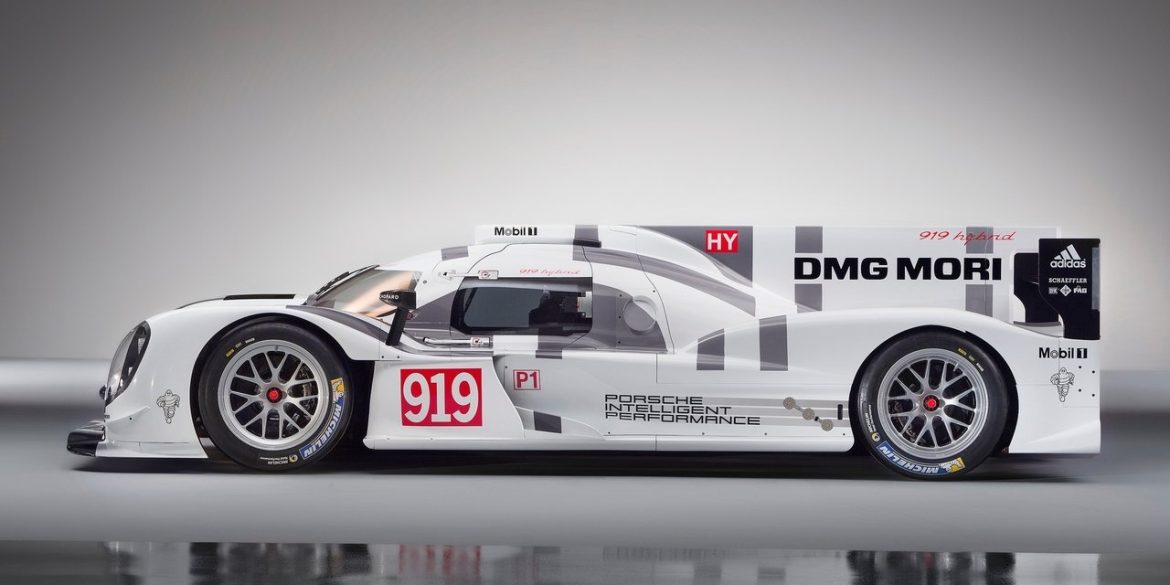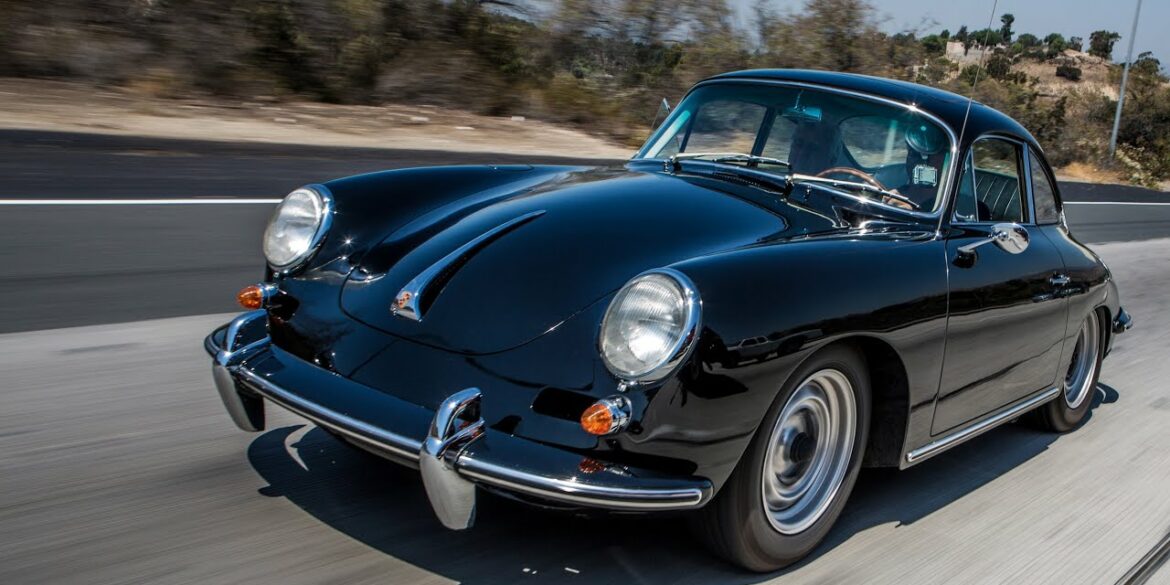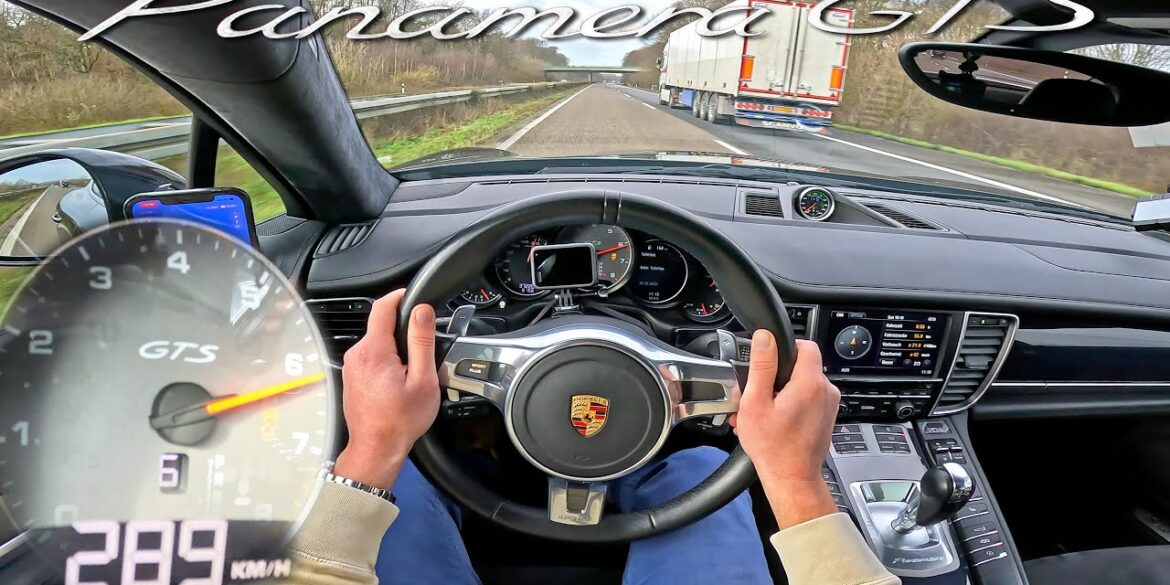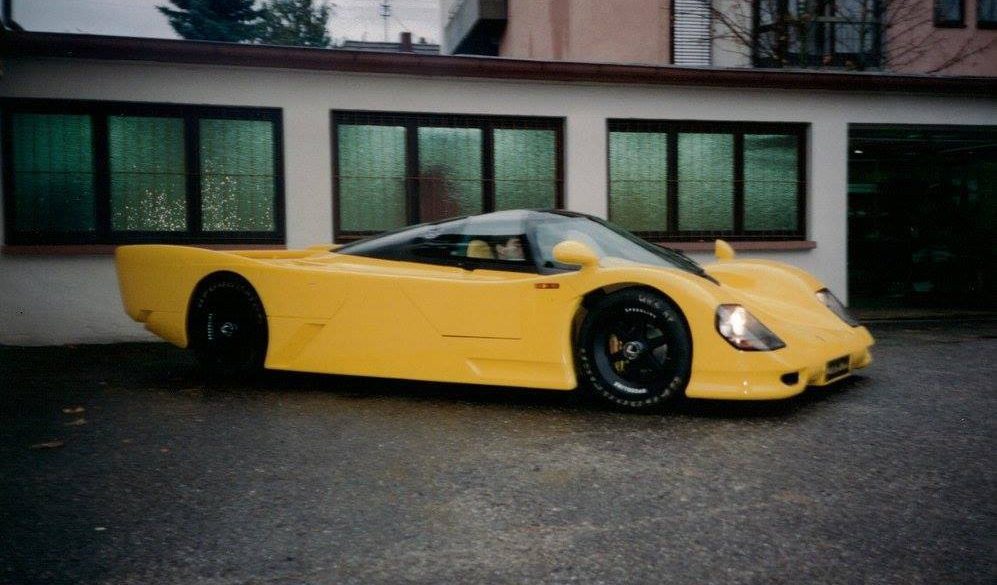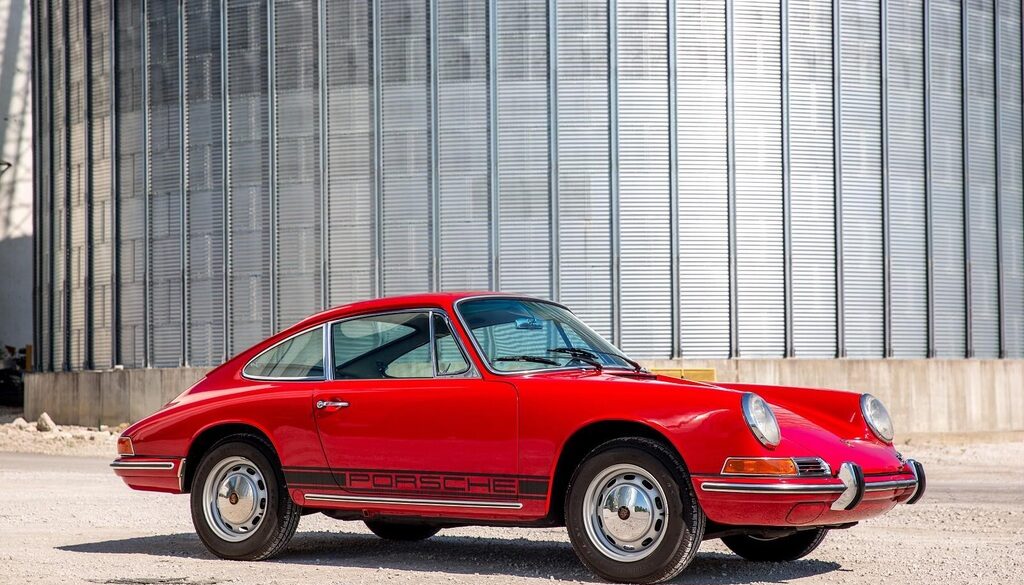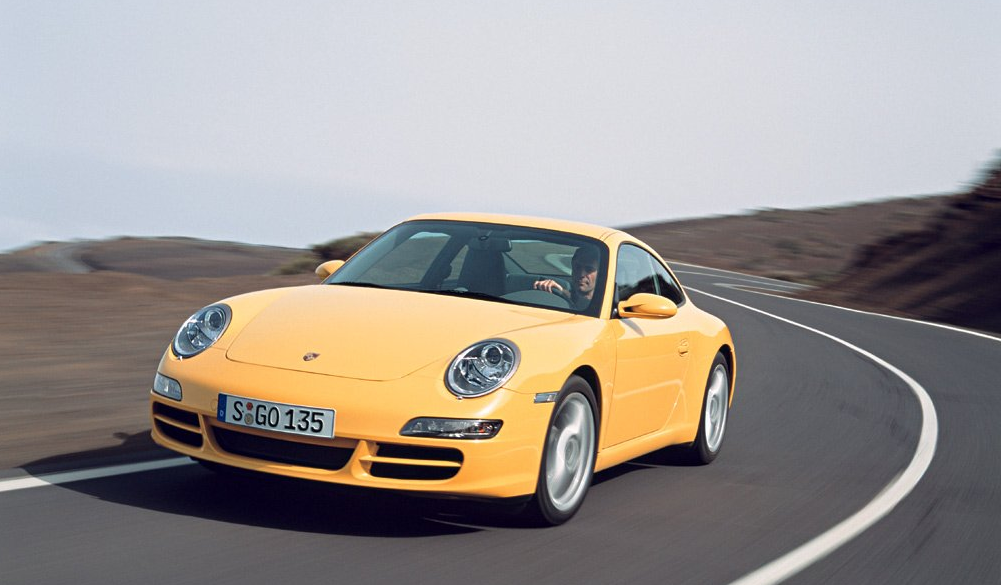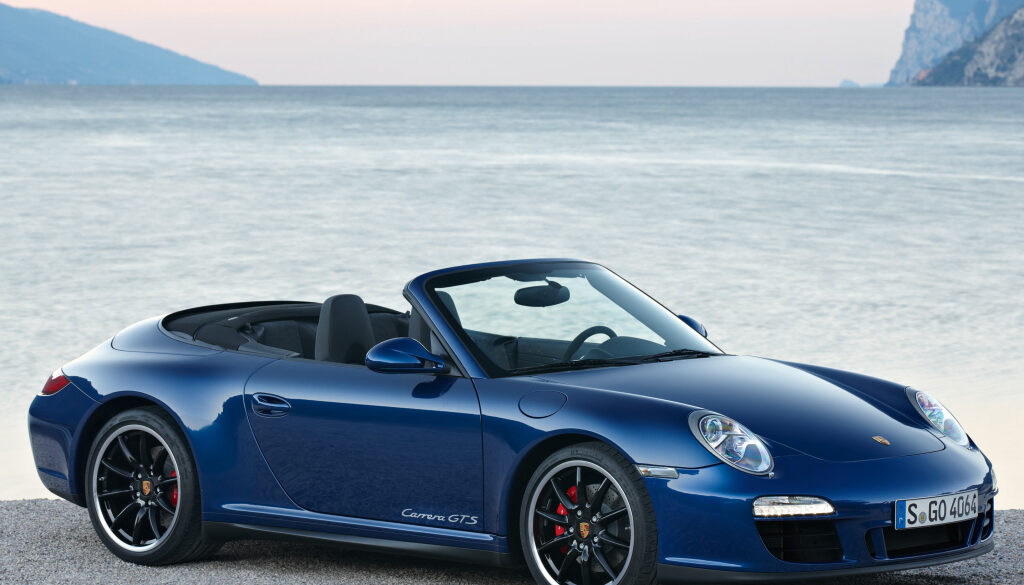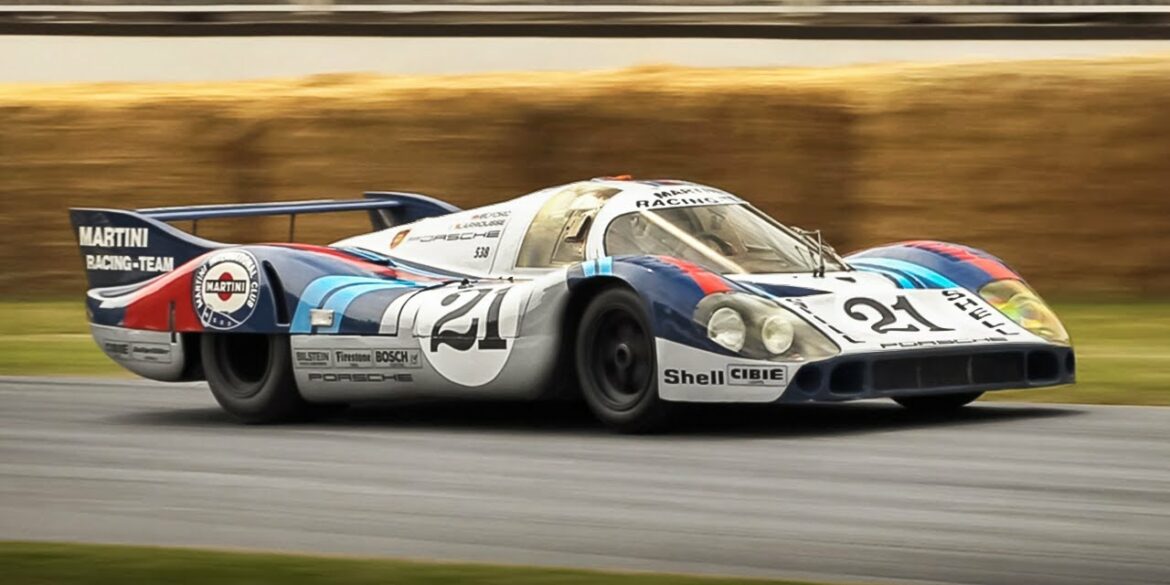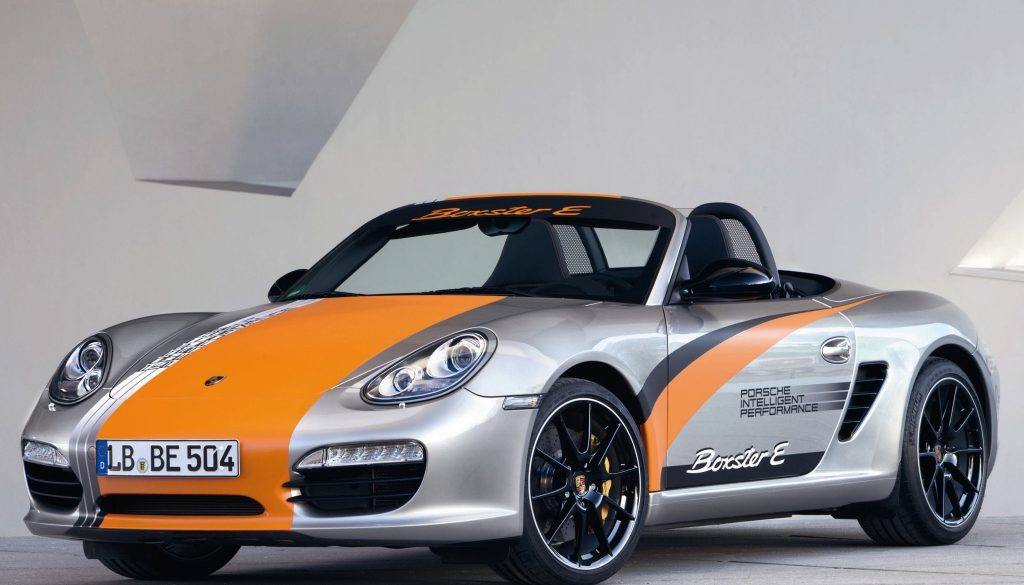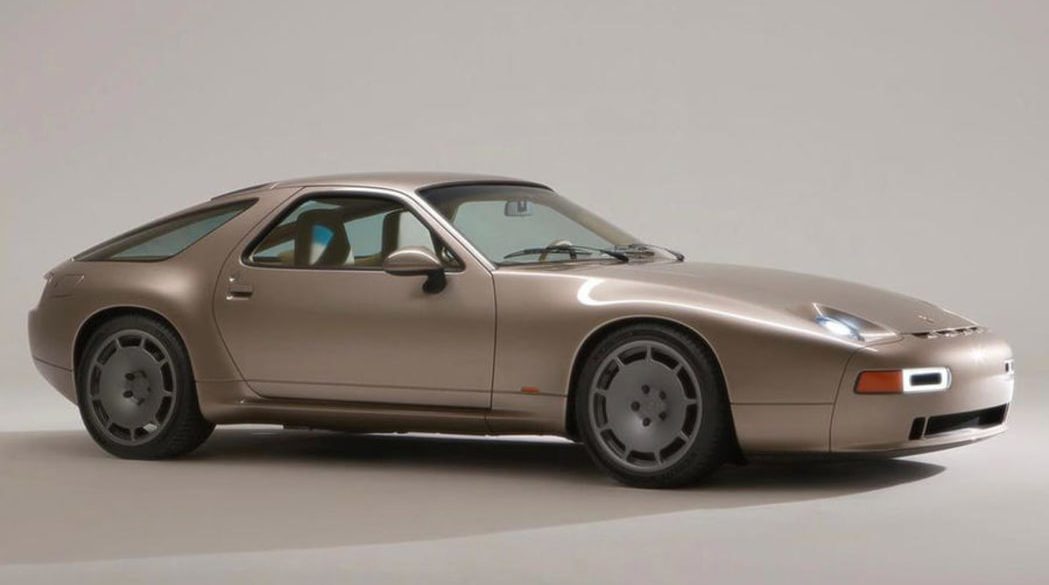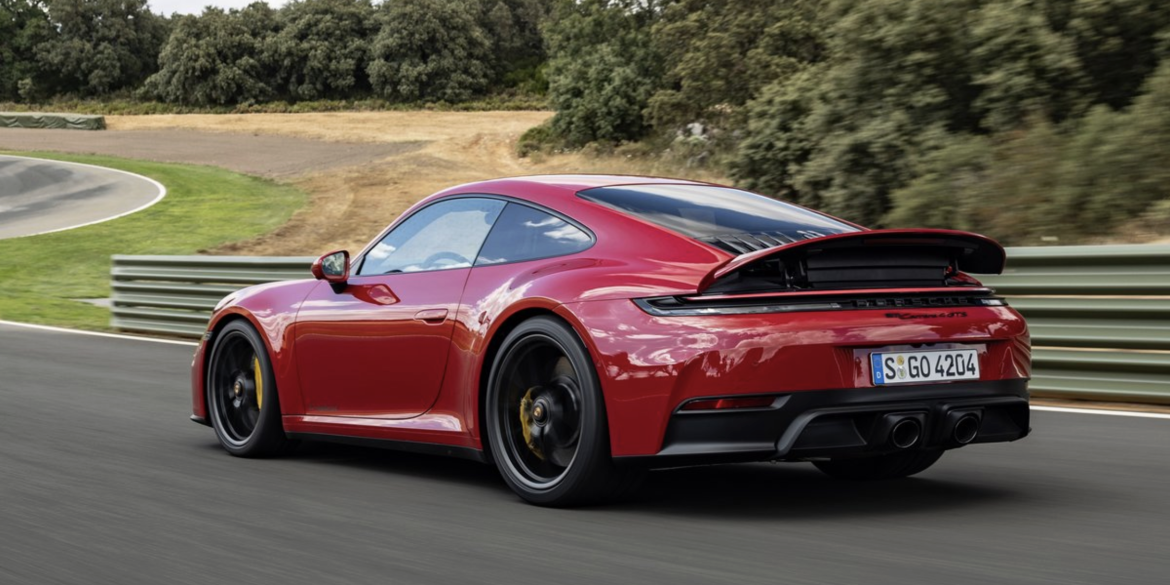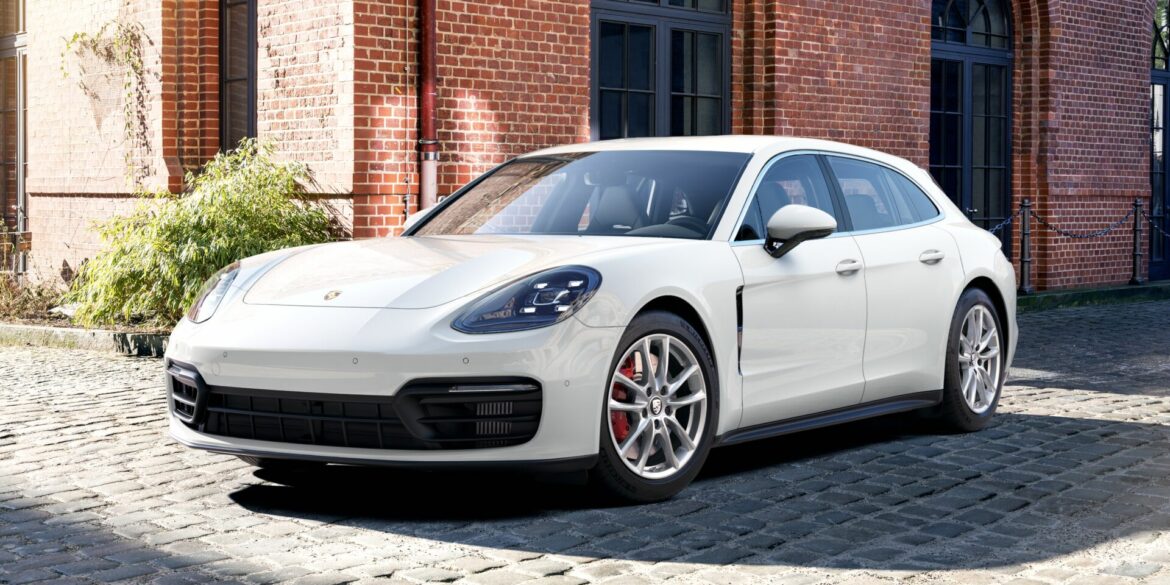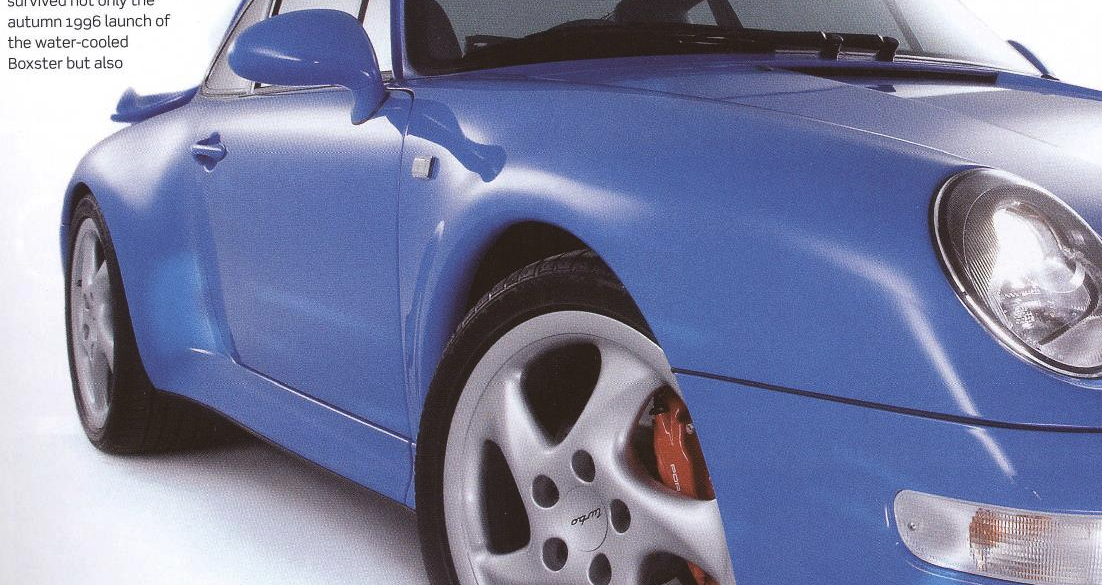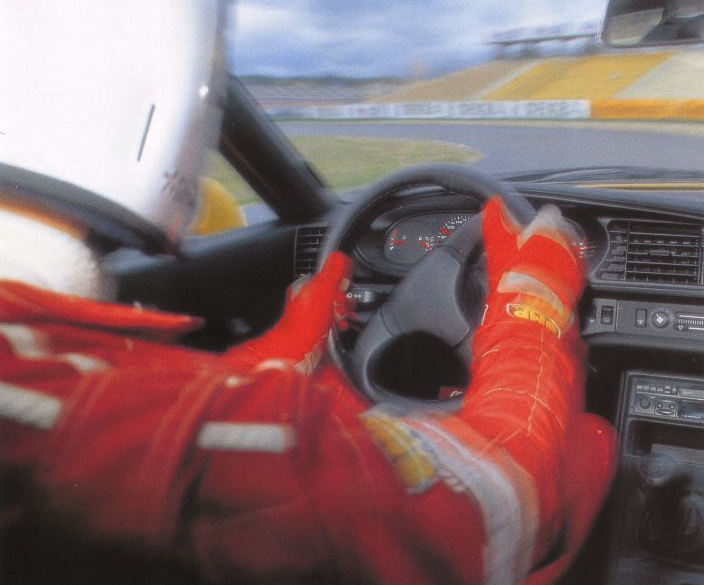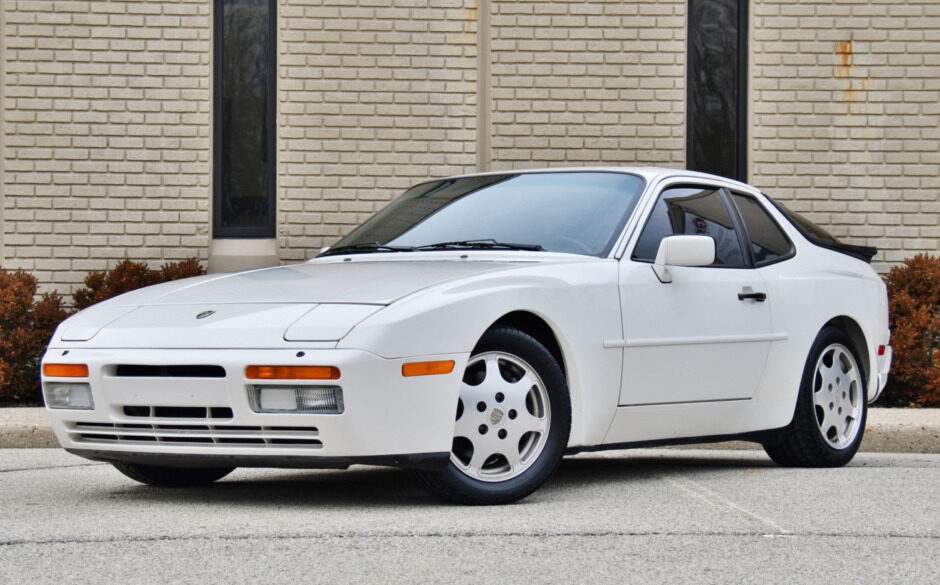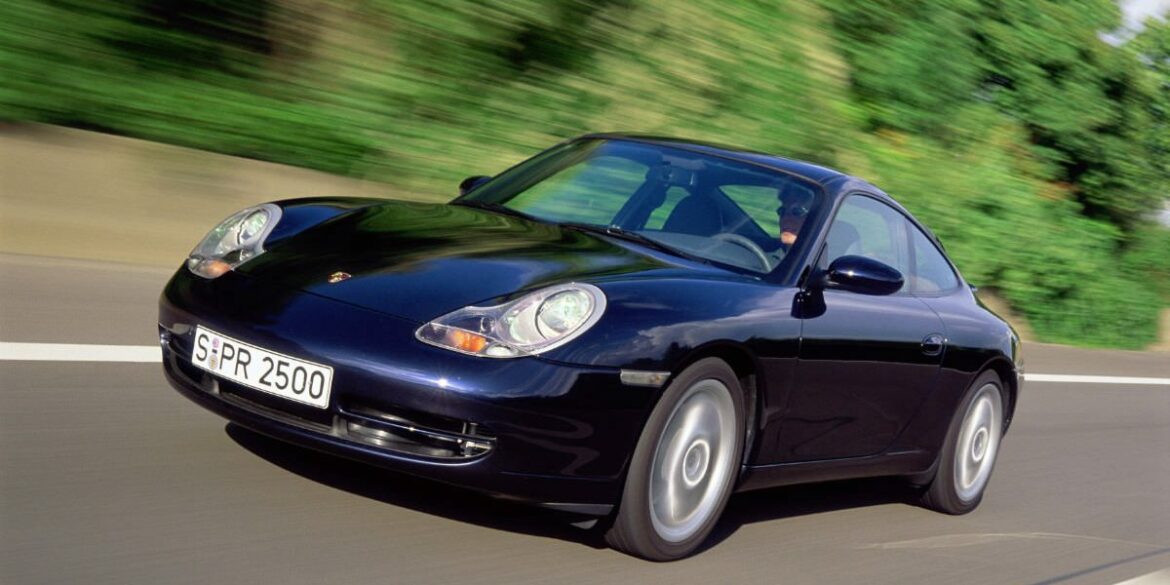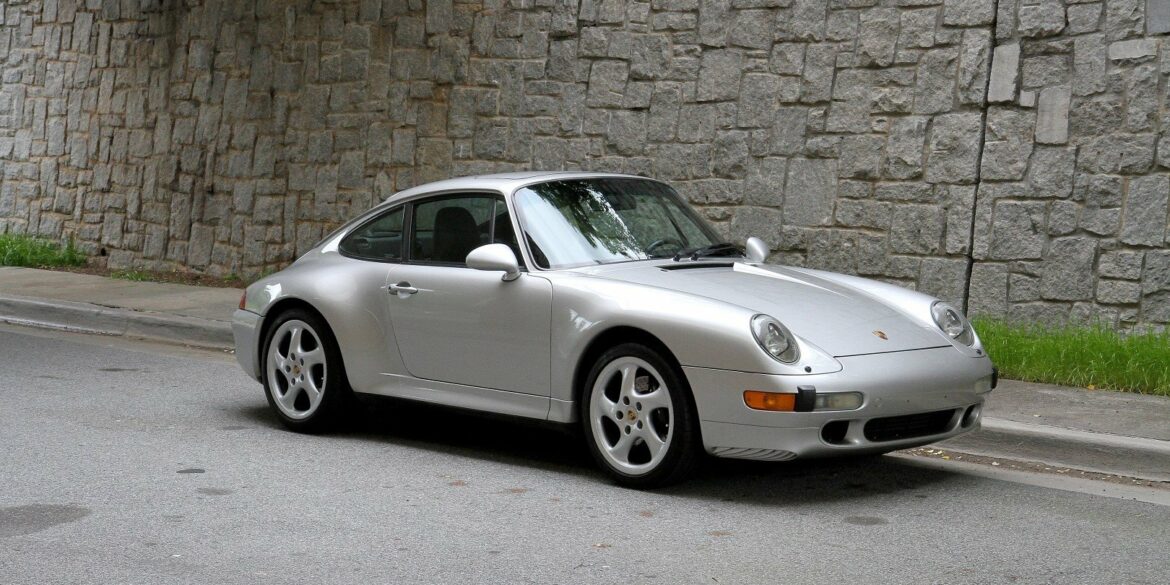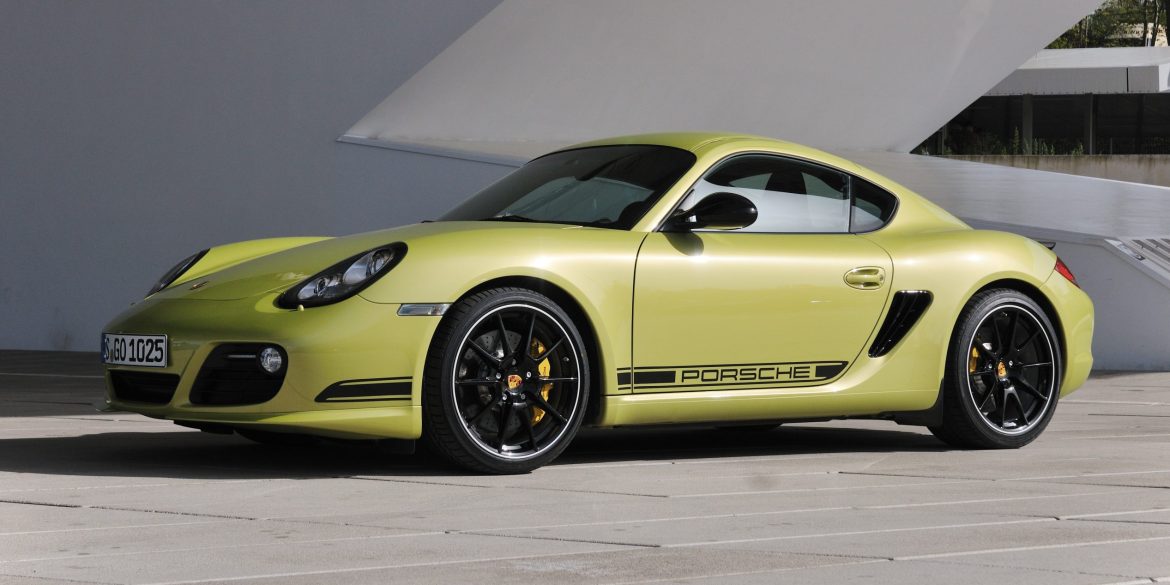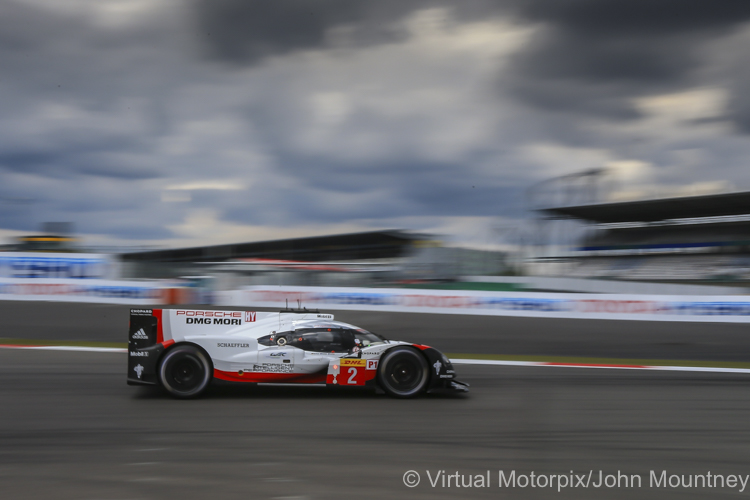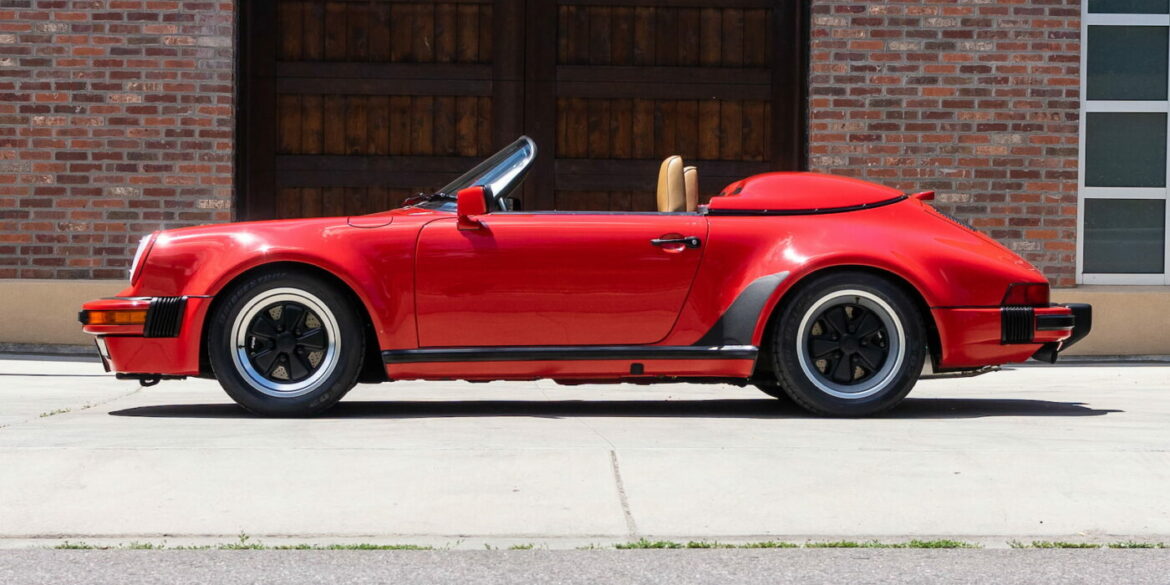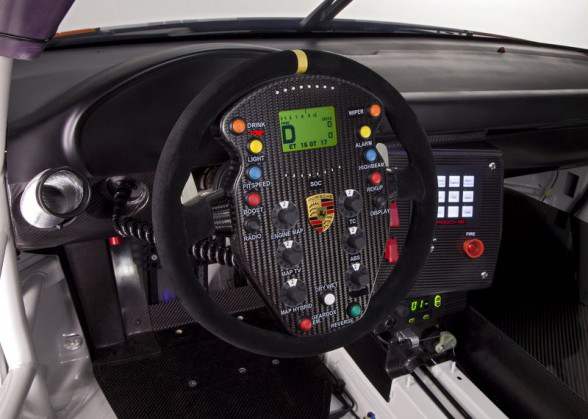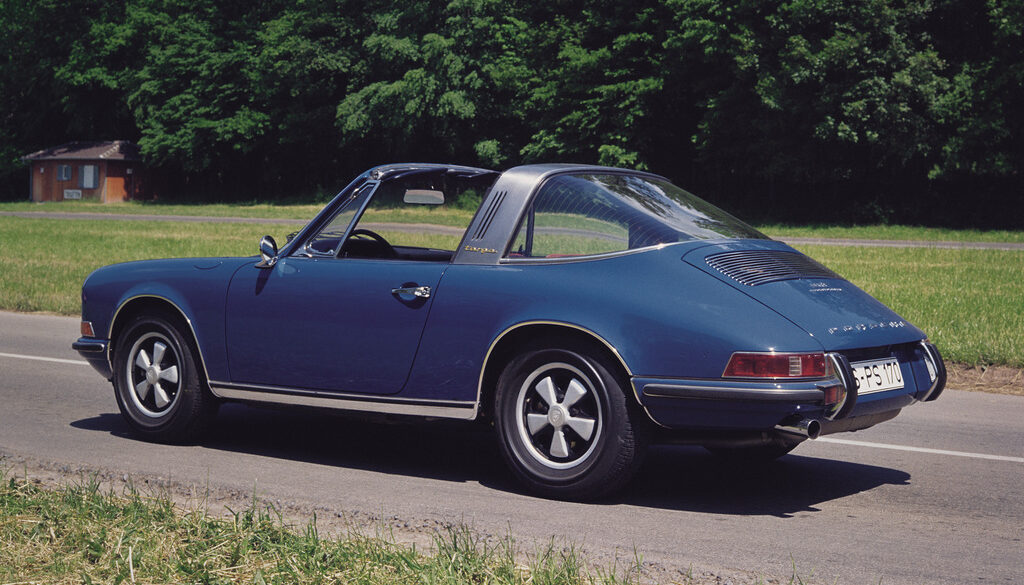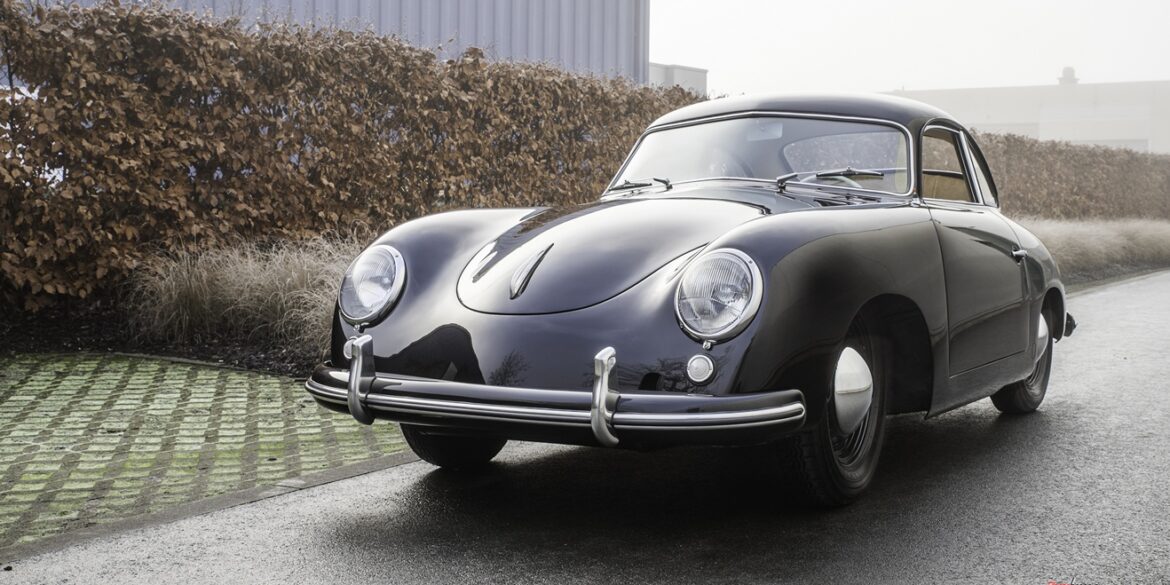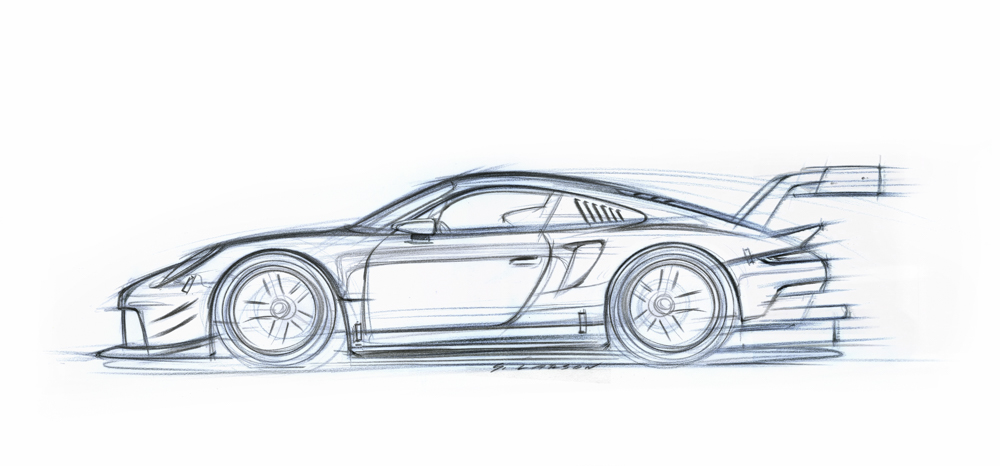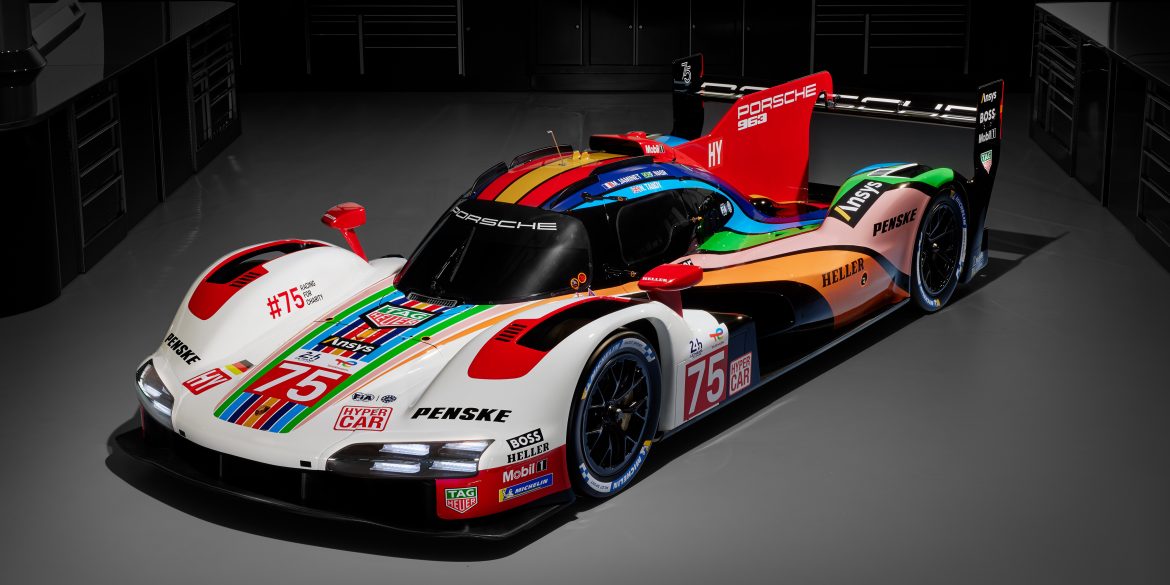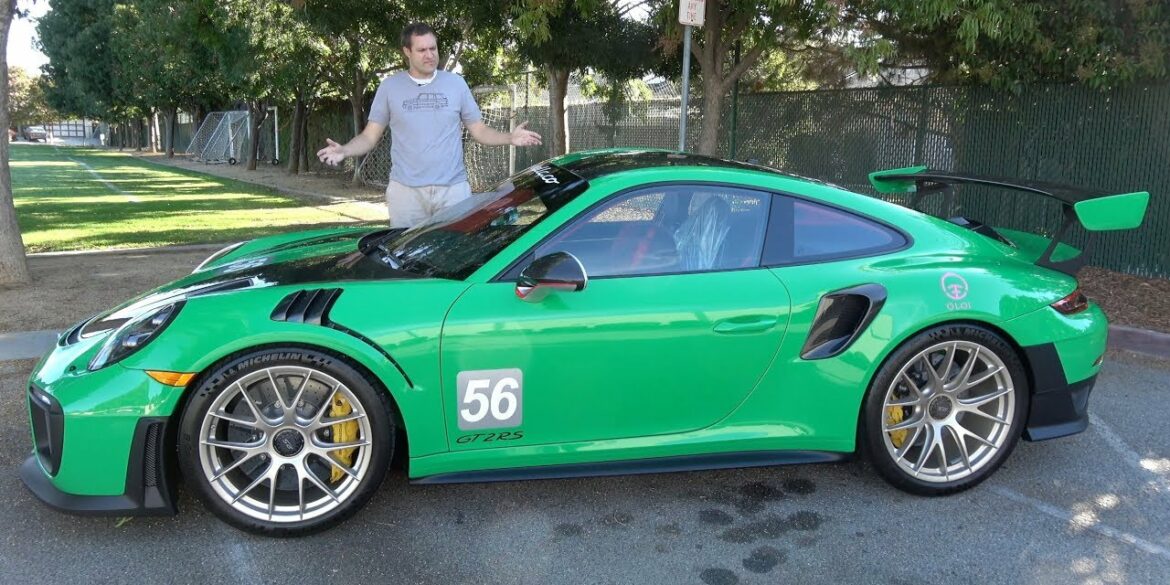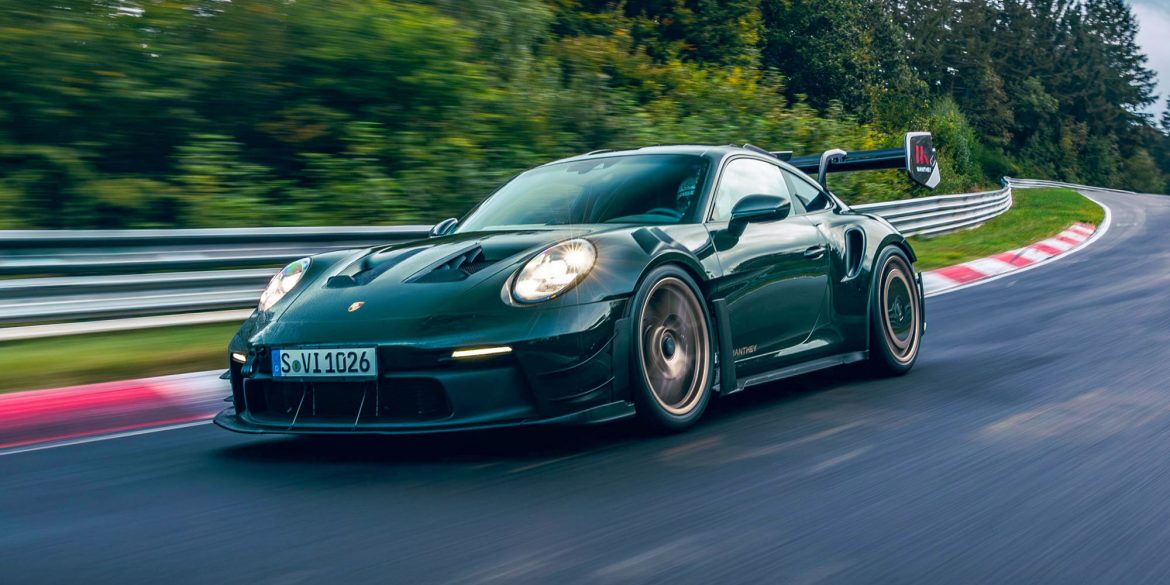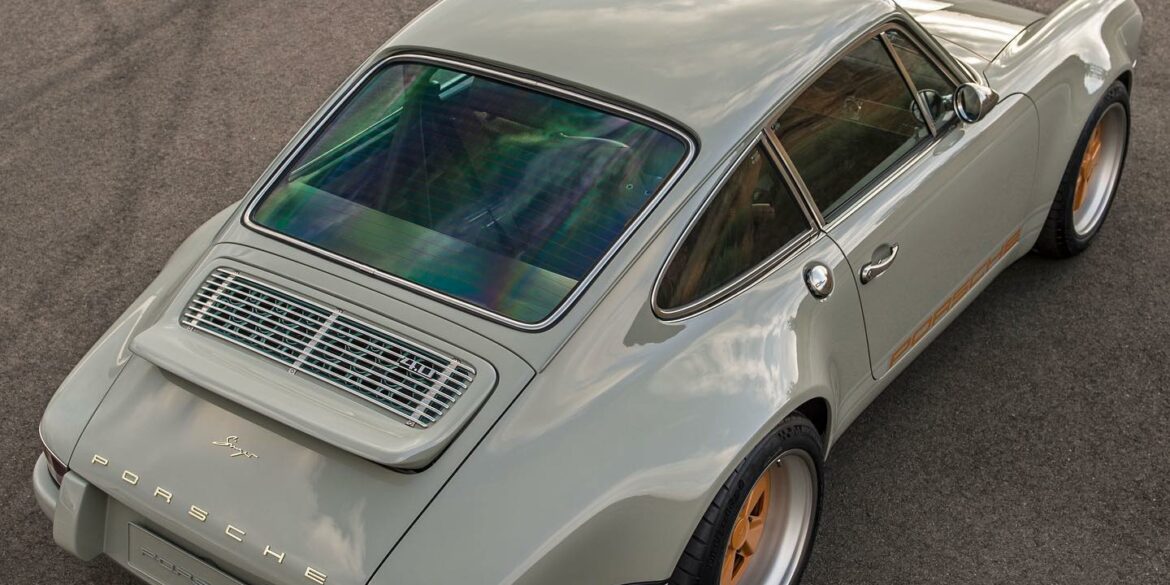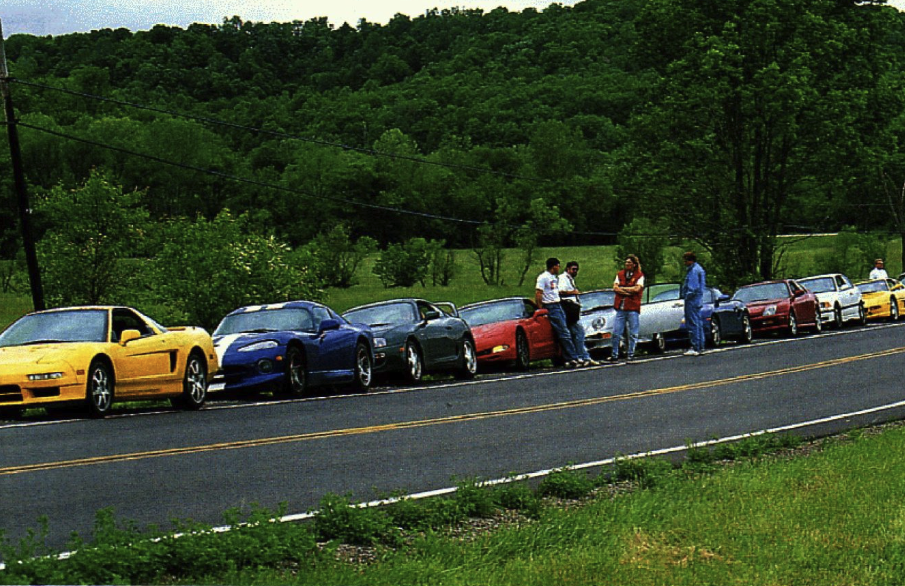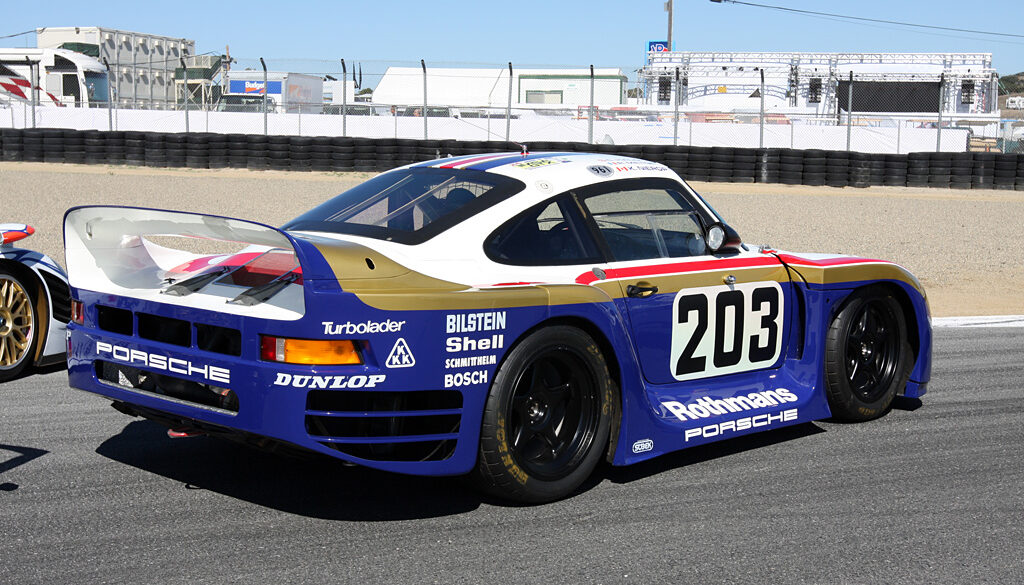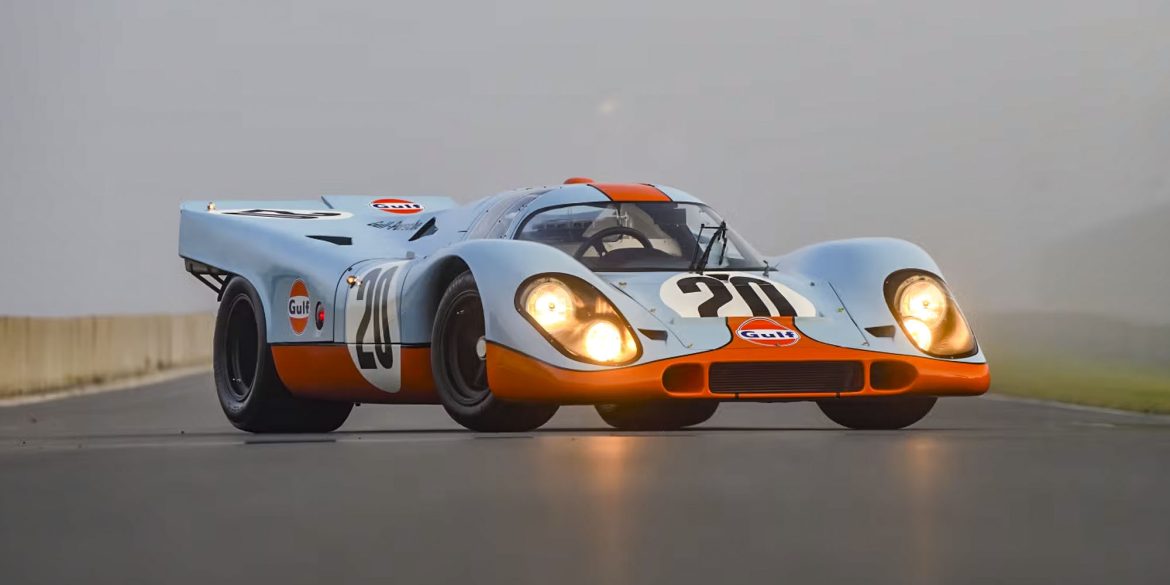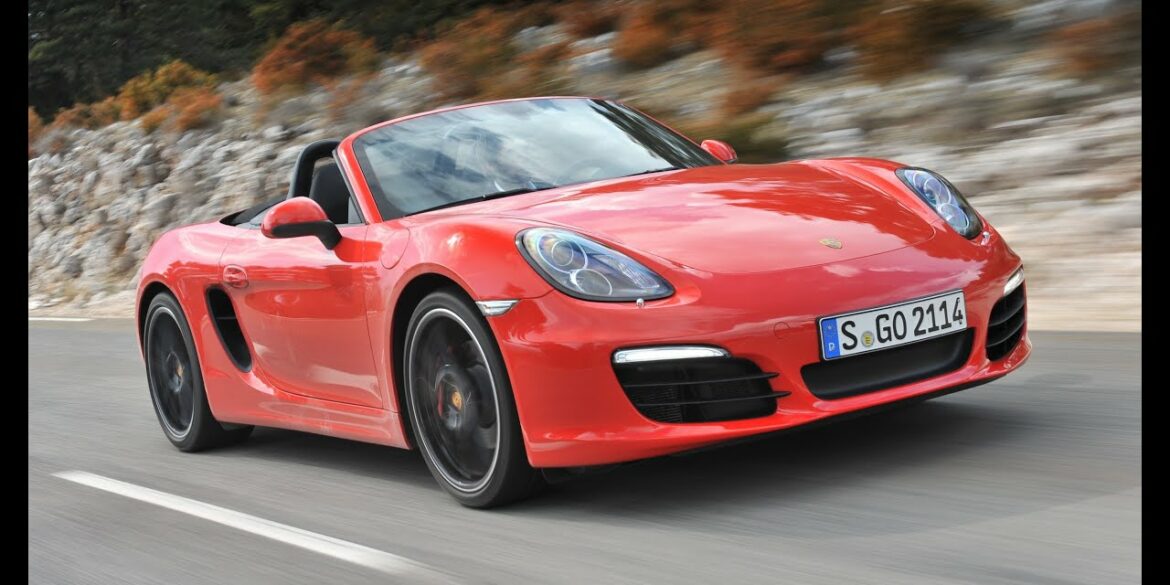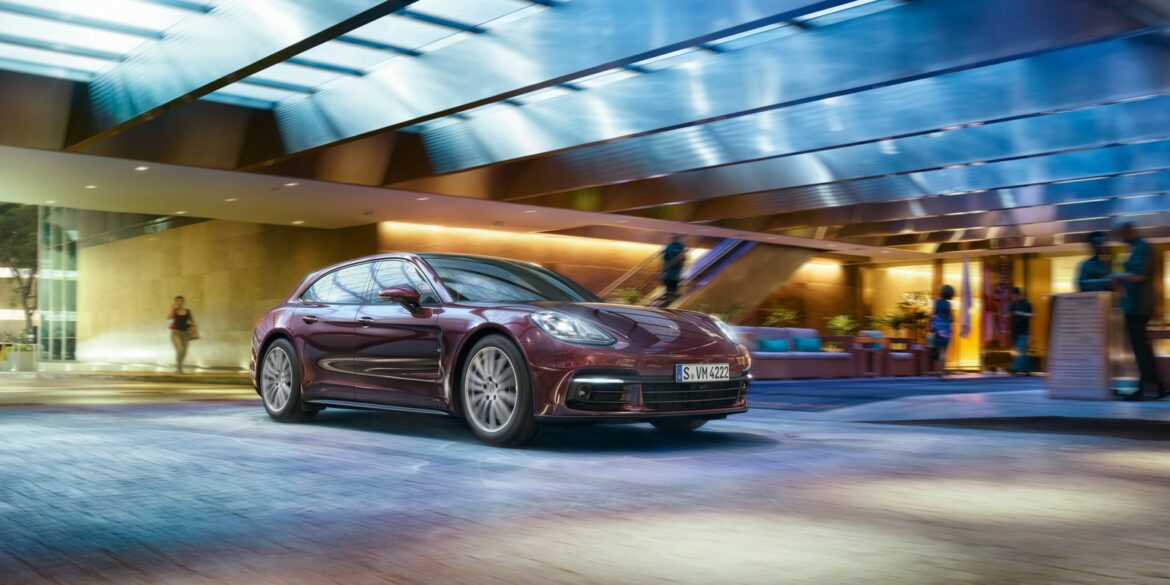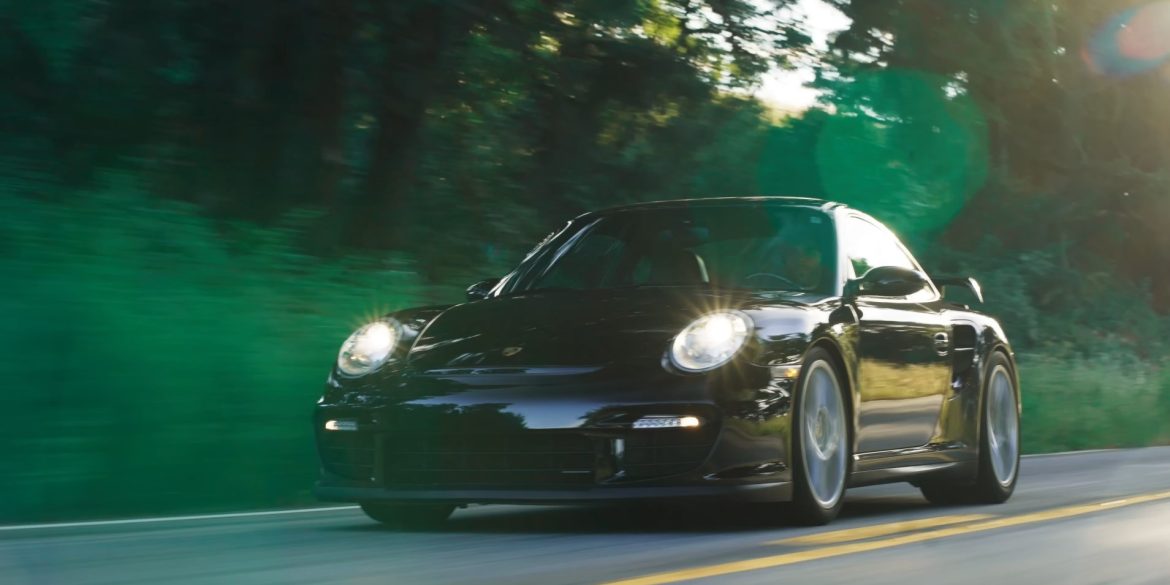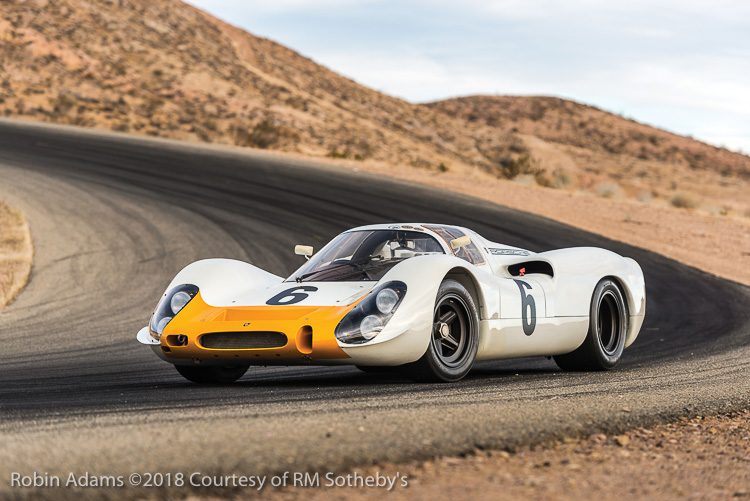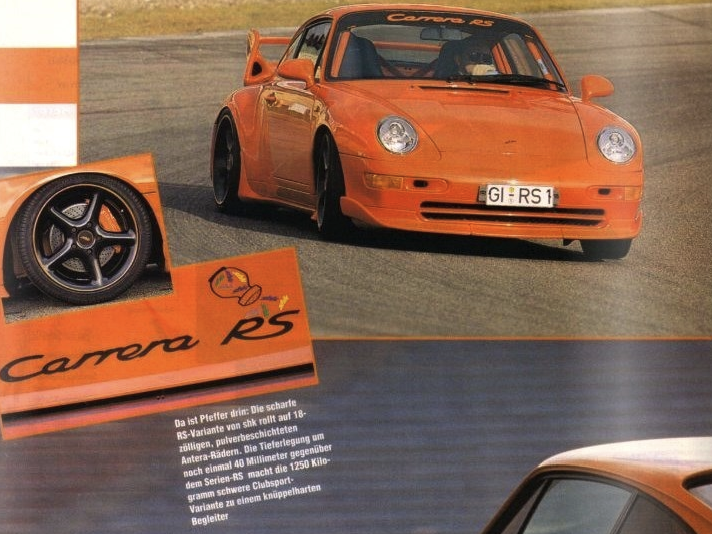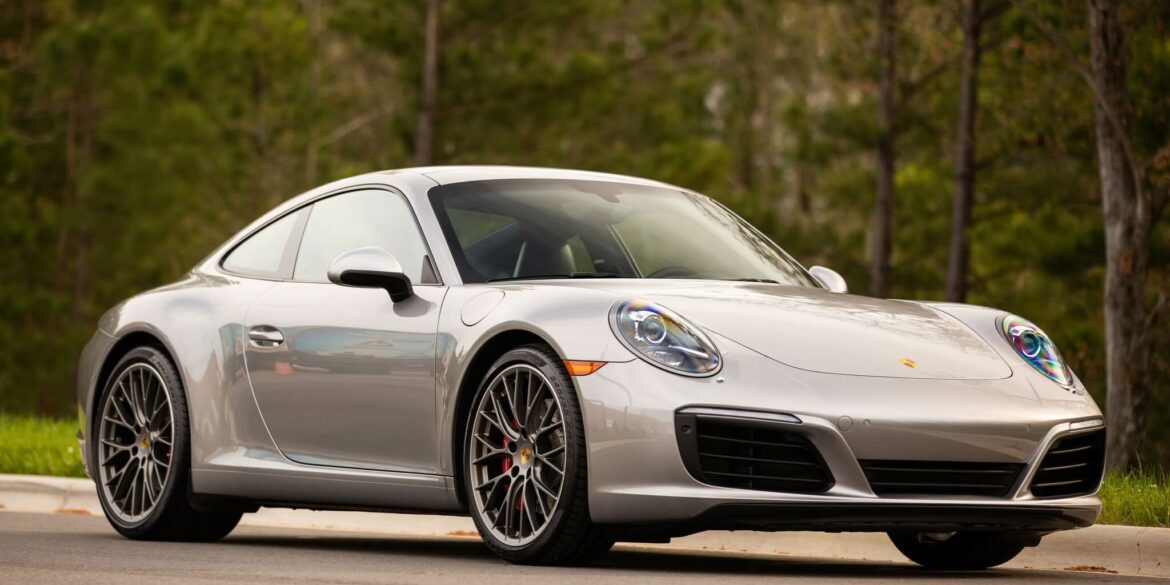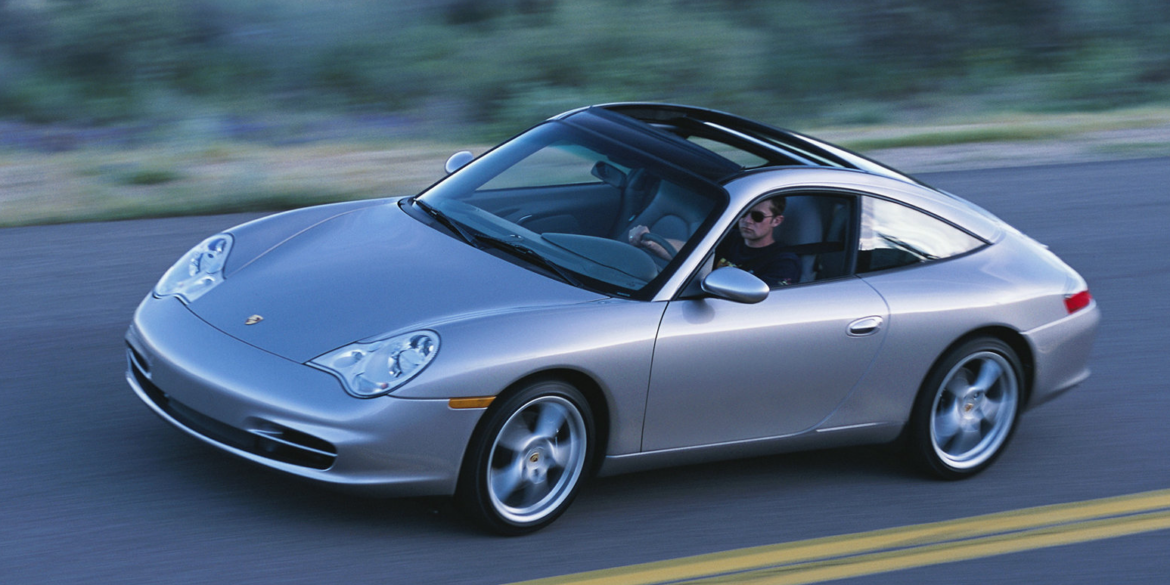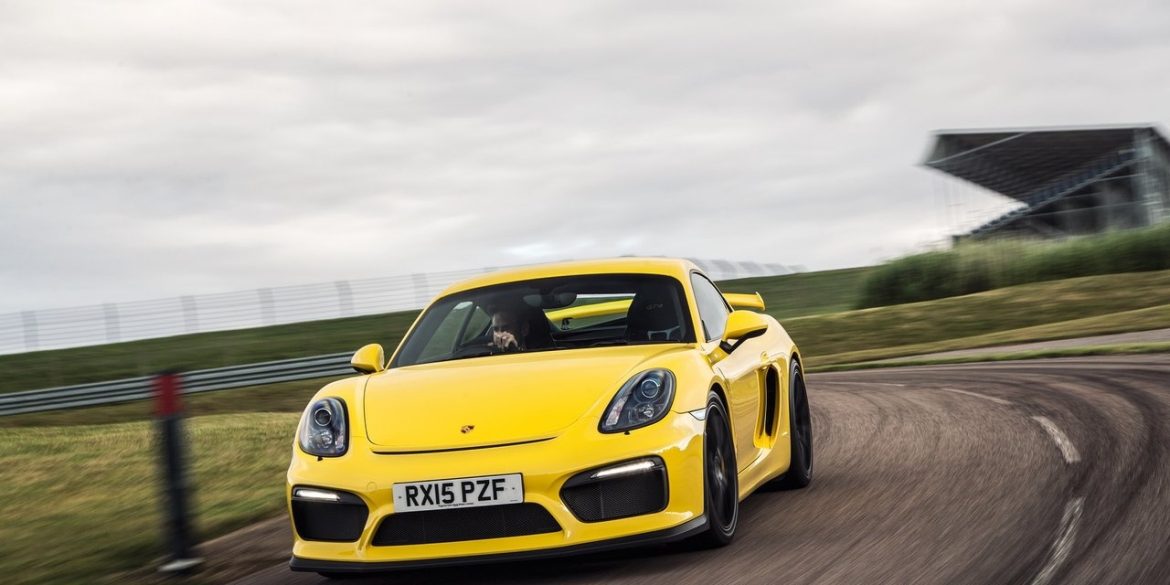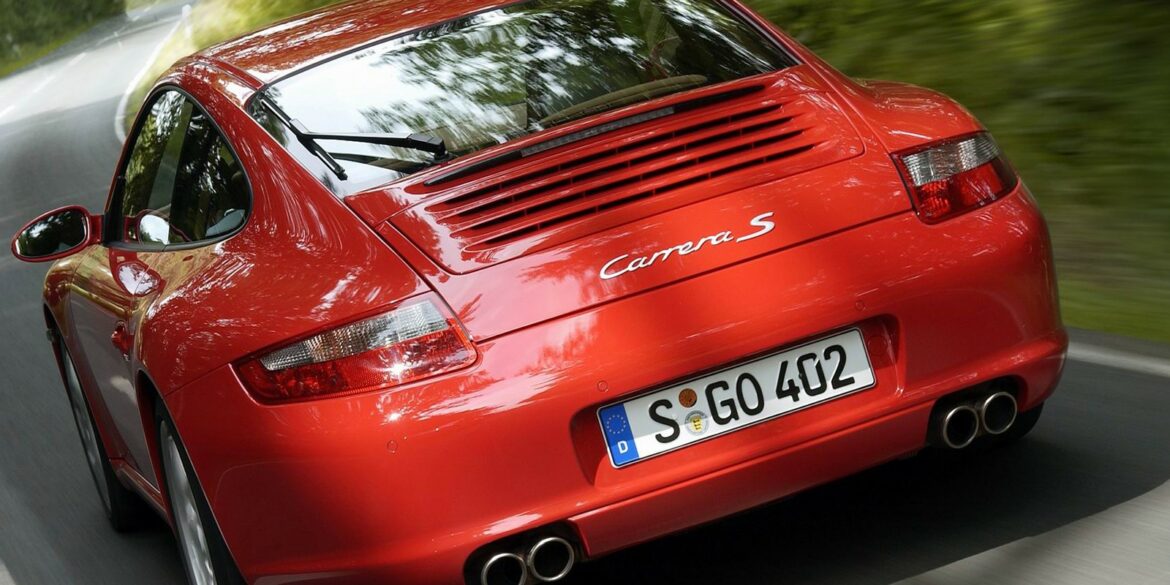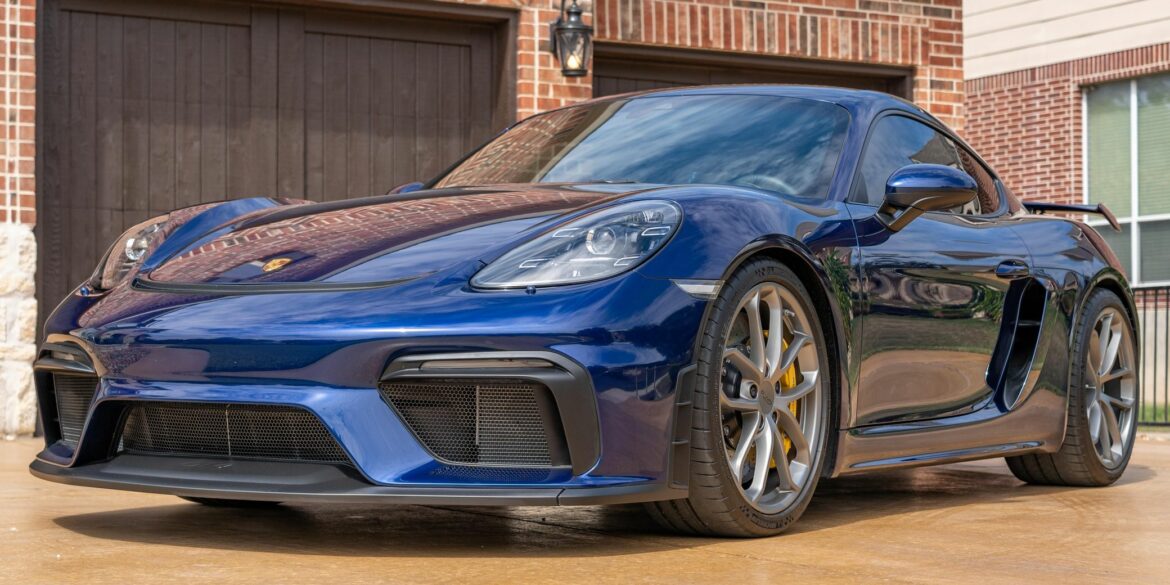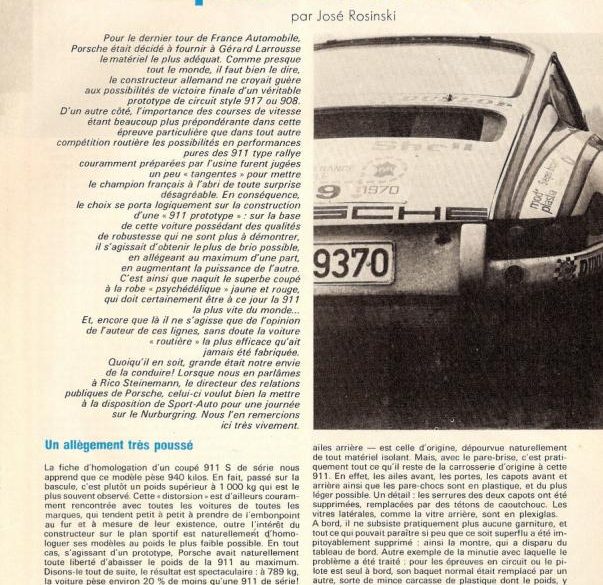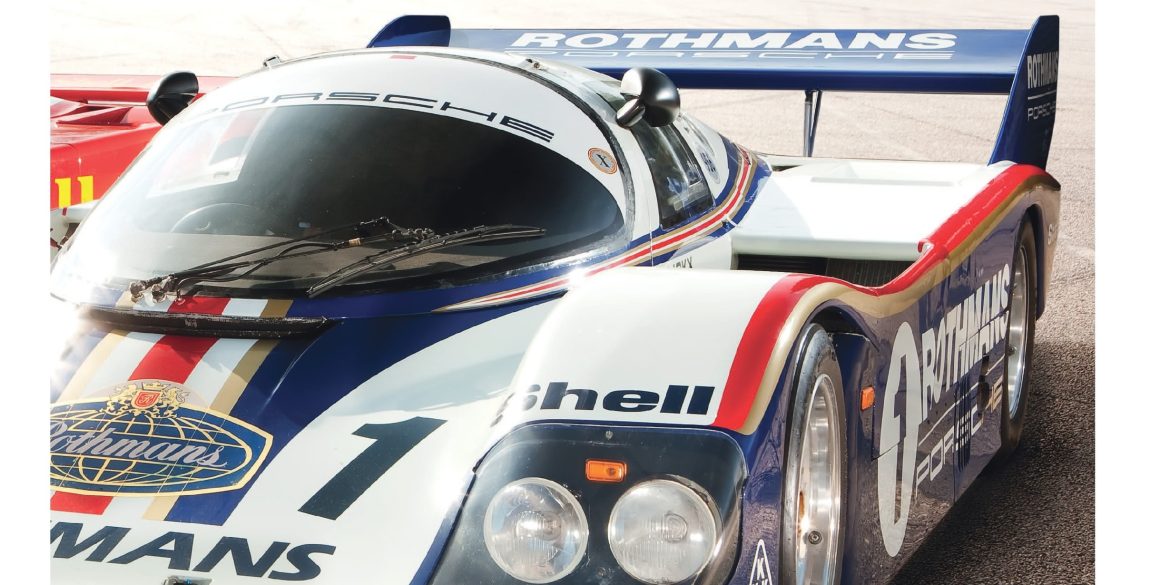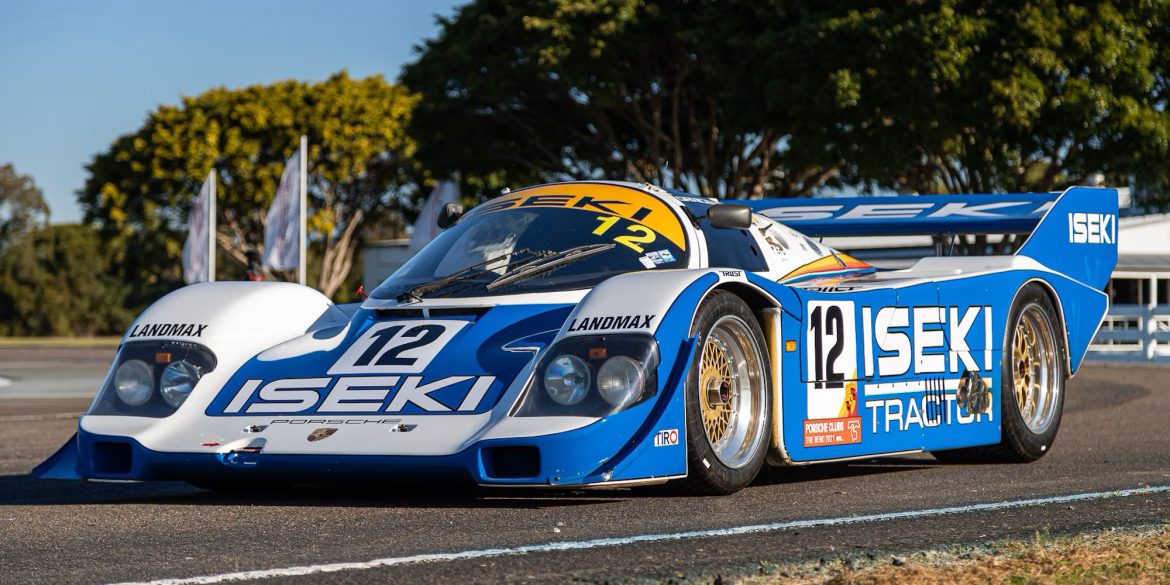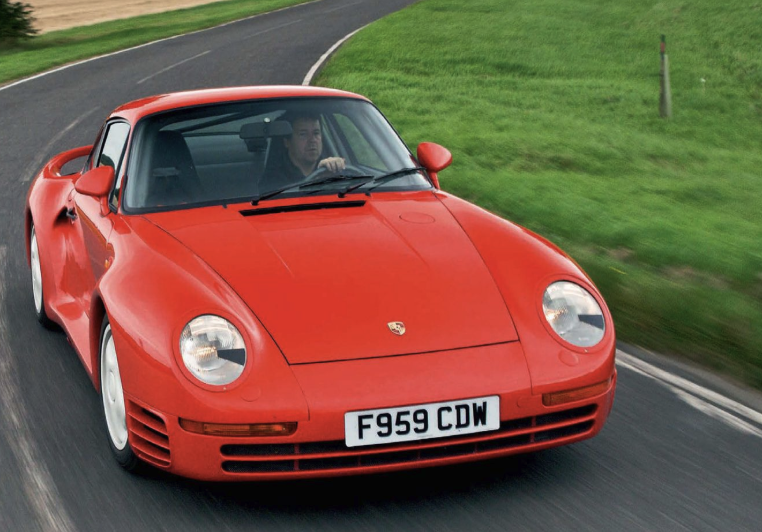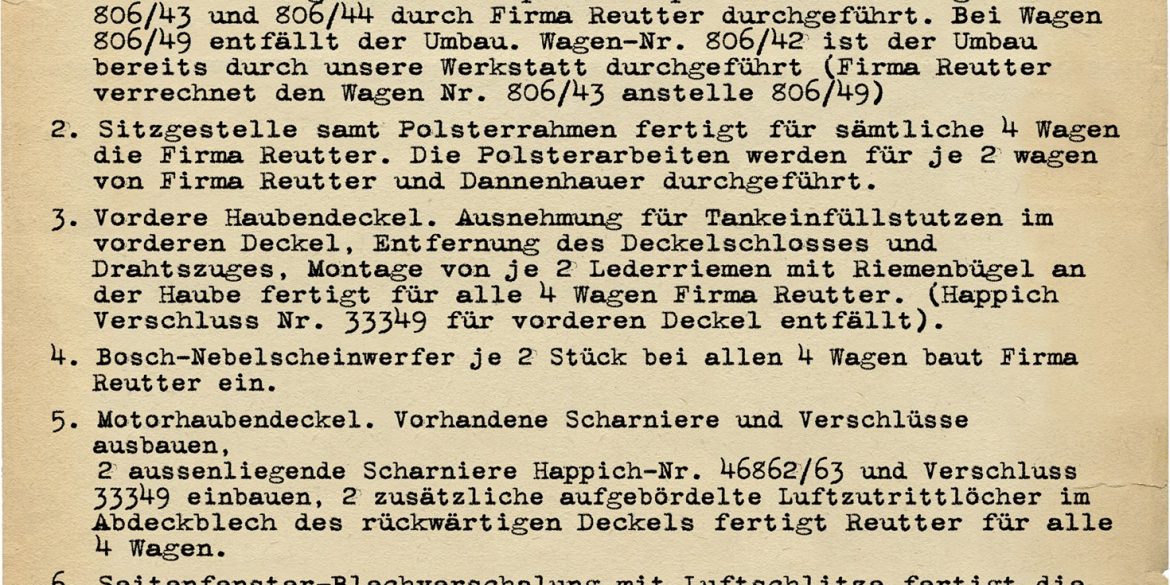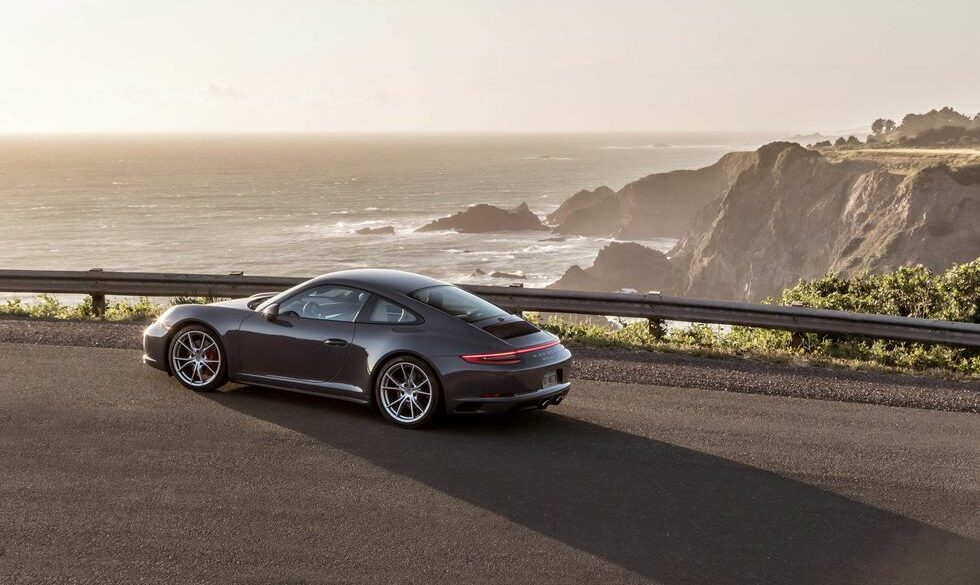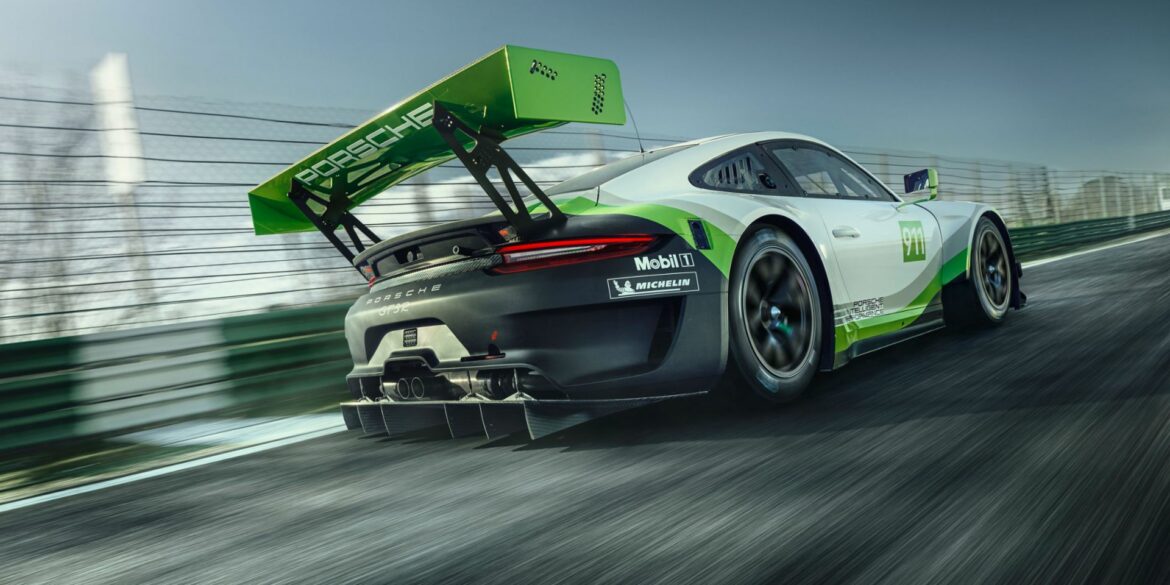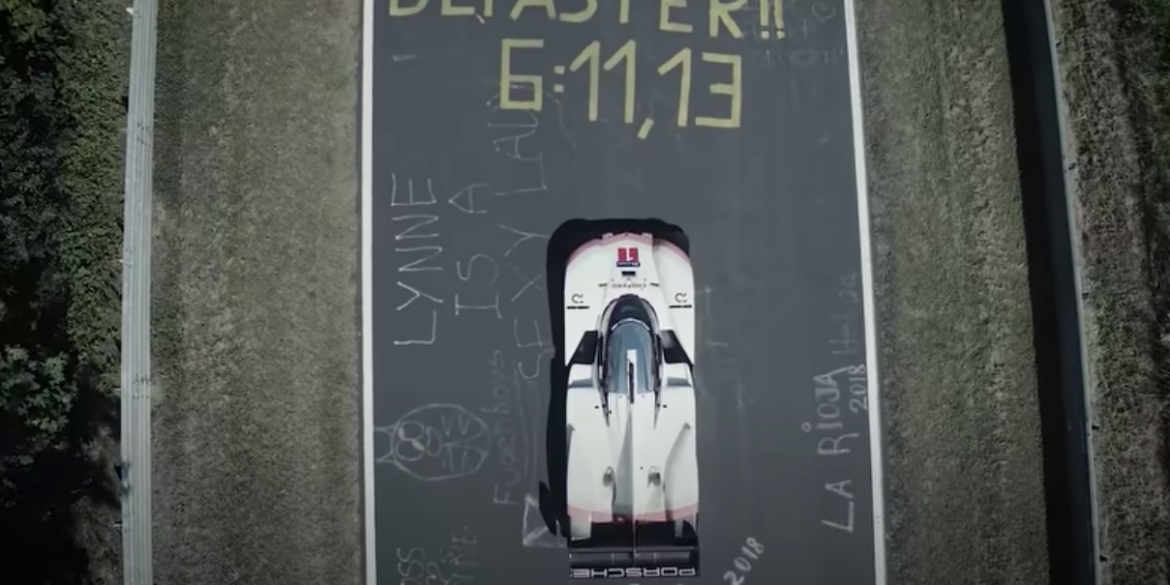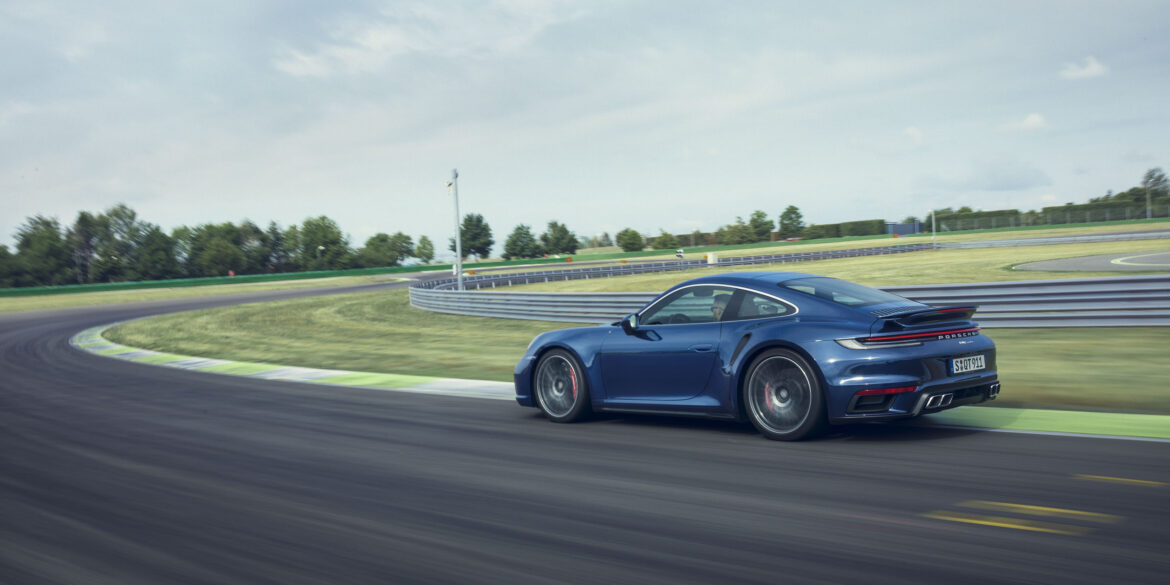Get your headphones ready to listen to the wonderful soundtrack of the 2007 Porsche Cayman S as it is driven around the track....
Porsche Models
All
- Porsche 911
- Porsche 914
- Porsche 917K
- Porsche 918
- Porsche 924
- Porsche 928
- Porsche 944
- Porsche 959
- Porsche 962
- Porsche Boxster Concept
- Porsche Carrera GT
- Porsche Cayenne
- Porsche Cayenne 955/957 (1st Gen)
- Porsche Cayman 987 (2nd Gen)
- Porsche RS Spyder (9R6)
- Porsche Boxster 986 (1st Gen)
- Porsche Cayman 981 (3rd Gen)
- Porsche 356 Pre-A
- Porsche Boxster 987 (2nd Gen)
- Porsche Cayenne 958 (2nd Gen)
- Porsche 718 Cayman 982 (4th Gen)
- Porsche 356 A
- Porsche Boxster 981 (3rd Gen)
- Porsche 356 B
- Porsche 718 Boxster 982 (4th Gen)
- Porsche 356 C
- Porsche 968
- Porsche Panamera
- Porsche Panamera 970 (1st Gen)
- Porsche Panamera 971 (2nd Gen)
- Porsche Boxster
- Porsche Cayman
- Porsche Macan
- Porsche Taycan
- Porsche 912
- Porsche 919
- Porsche 956
- Porsche 2708 Indy
- Porsche Type 64
- Porsche 918 RSR Concept
- Porsche 918 Spyder
- Porsche 918 Concept
- Porsche 918 Spyder Prototype
- Porsche 917
- Porsche Race Cars
- 911 Carrera RS 2.7
- Porsche 550
- Porsche 718
- Porsche 901 (911)
- Porsche Concept Cars
- Porsche 904
- Porsche 906
- Porsche 907
- Porsche 908
- Porsche 910
- Porsche 911 (F-Series)
- Porsche 911 (991)
- Porsche 911 (G-Series)
- Porsche 911 (964)
- Porsche 911 (993)
- Porsche 911 GT1 Race
- Porsche 911 GT1 Street
- Porsche 911 (996)
- Porsche 911 (997)
- Porsche 916
- Porsche 919 Hybrid
- Porsche 934
- Porsche 934/5
- Porsche 935
- Porsche 936
- Porsche Mission E
- Porsche 928 S
- Porsche 928 S4
- Porsche 928 GT
- 911 Speedster Concept
- Porsche 928 GTS
- Porsche 928 Specials
- Porsche 928 H50
- Porsche 928 CS/SE
- Porsche 935 Tribute
- Porsche 597
- Porsche 551
- Porsche Mission E Cross Turismo
- Porsche 911 (992)
- Porsche Concept 917
- Porsche Sport Tourer Electric
- Porsche Le Mans Living Legend
- Porsche 960 Turismo Concept
- Porsche 919 Street
- Porsche 904 Living Legend
- Porsche 906 Living Legend
- Porsche 911 Vision Safari Concept
- Porsche Bergspyder Concept
- Porsche 917 Living Legend
- Porsche Macan Vision Safari
- Porsche Vision 916
- Porsche Vision 918 RS
- Porsche Vision 920
- Porsche Vision E
- Porsche 917 16-Cylinder Prototype
- Porsche 959 Gruppe B
- Porsche Carrera GT Concept
- Porsche Tapiro Concept
- Porsche 718 Cayman GT4 Rallye
- Porsche Taycan 4S
- Porsche Taycan Turbo
- Porsche Taycan Turbo S
- Porsche Type 360
- Porsche 645 Spyder
- Porsche 550 Coupé (Prototype)
- Porsche 550 Spyder (Prototype)
- Porsche 550 Spyder
- Porsche 550 RS Spyder
- Porsche 550A RS Spyder
- Porsche 787 F1
- Porsche 804 F1
- Porsche 904 Carrera GTS
- Porsche 904/6 Carrera GTS
- Porsche 904/8 Carrera GTS
- Porsche 904 Bergspyder
- Porsche 906 Spyder
- Porsche 906 LH Coupé
- Porsche 965 (911)
- Porsche 906 E Carrera 6
- Porsche 942
- Porsche 906/8 Coupé
- Porsche 959 Prototype
- Porsche 906 Carrera 6
- Porsche 969
- Porsche 910 Bergspyder
- Porsche 989
- Porsche 910 Targa
- Porsche 909
- Porsche C88
- Porsche 718 RSK Spyder
- Porsche Panamericana
- Porsche 718 RS 60 Spyder
- Porsche 718 RS 61 Spyder
- Porsche 718 W-RS Spyder
- Porsche 718 GTR Coupe
- Porsche 718/2 F2
- Porsche 718 RS 61 LM Coupé
- Porsche 718 RSK Mittellenker
- Porsche 907 K
- Porsche 907 LH
- Porsche 908/01 LH Coupé
- Porsche 908/01 K Coupé
- Porsche 908/02 K Spyder
- Porsche 908 K Flunder Spyder
- Porsche 908 LH Flunder Spyder
- Porsche 908/03 Spyder
- Porsche 908/03 Spyder Turbo
- Porsche 919 Hybrid Evo
- Porsche 984
- Porsche LMP2000
- Porsche LMP1-98
- Porsche 917 LH-69
- Porsche 961
- Porsche WSC-95
- Porsche 917 K-69
- Porsche 917 ‘Interserie Spyder’
- Porsche 917 K-70
- Porsche 917 K-71
- Porsche 917 LH-70
- Porsche 917 LH-71
- Porsche 917/20
- Porsche 917/10-71
- Porsche 917/10-72
- Porsche 917/10 Turbo
- Porsche 917/20 Turbo
- Porsche 917/30
- Porsche 914/4 (1.7 L)
- Porsche 914/4 (2.0 L)
- Porsche 914/6 (2.0 L)
- Porsche 914 LE
- Porsche 914/4 (1.8 L)
- Porsche 914/8
- Porsche 914-6 GT
- Porsche 924 (Base)
- Porsche 924 Turbo
- Porsche 924 Carrera GT
- Porsche 924 Carrera GTR
- Porsche 924 Carrera GTS
- Porsche 924S
- Porsche 924 Rallye Turbo
- Porsche 924 Carrera GTP
- Porsche 924 SCCA
- Porsche 944 Coupe
- Porsche 944 S Coupe
- Porsche 944 S2 Coupe
- Porsche 944 S2 Cabriolet
- Porsche 944 Turbo Coupe
- Porsche 944 Turbo S Coupe
- Porsche 944 Turbo Cup
- Porsche 944 Turbo Cabriolet
- Porsche 944 GTP
- Porsche 944 Swiss Special
- Porsche 944 French Special
- Porsche 944 Celebration
- Porsche 944 S2SE
- Porsche 968 Coupe
- Porsche 968 Cabriolet
- Porsche 968 CS Coupe
- Porsche 968 Turbo S
- Porsche 968 Turbo RS
- Porsche 968 Sport
- Porsche 959 Rally
- Porsche 959 Komfort
- Porsche Cayenne 9YA/9YB/9YC (3rd Gen)
- Porsche 959 Sport
- Porsche Boxster (Base)
- Porsche Boxster S
- Porsche Boxster S Special Edition
- Porsche Boxster Spyder
- Porsche Boxster RS 60 Spyder
- Porsche Boxster GTS
- Porsche Boxster T
- Porsche Cayman (Base)
- Porsche Cayman S
- Porsche Cayman GTS
- Porsche Cayman GT4
- Porsche Cayman R
- Porsche Macan 95B (1st Gen)
- Porsche Cayman S Black Edition
- Porsche Macan (Base)
- Porsche Cayman S Sport
- Porsche Macan S
- Porsche Cayman S Design Edition 1
- Porsche Macan GTS
- Porsche Cayman T
- Porsche Macan Turbo
- Porsche Cayman GT4 Clubsport
- Porsche Taycan (Base)
- Porsche 718 Boxster 25
- Porsche Taycan 4
- 964 Carrera
- Porsche Formula E
- 964 Carrera 4
- ’30 Jahre’ Anniversary
- 964 Speedster
- 964 Turbo
- 964 Carrera RS
- 964 Carrera Cup
- 964 RSR
- 993 Carrera
- Porsche Cayman GT4 RS
- 992 Edition 50
- 993 Carrera 4
- 993 Carrera 4S
- 911 2.0 Bertone Roadster
- Porsche Macan T
- 993 Carrera S
- Porsche Mission R Electric
- 992 Sport Classic
- 993 Targa
- Porsche Vision Gran Turismo
- 993 Turbo
- 993 Carrera RS
- 996 Carrera
- 992 America Edition 911
- 993 GT2
- 996 Carrera 4
- 993 Carrera Cup
- 996 Targa
- 996 Carrera 4S
- 996 Turbo
- Porsche 963
- 996 Turbo S
- Porsche 718 Cayman GT4 ePerformance
- 996 GT3
- 996 GT3 RS
- 996 GT2
- 996 GT3 Cup
- 996 GT3 R
- 996 GT3 RSR
- 996 GT3 RS Race
- 997 Carrera
- 997 Carrera S
- 997 Carrera 4
- 997 Carrera 4S
- 997 Targa
- 997 Targa 4S
- 911 Carrera 3.0 Coupe (G-Series)
- 997 Turbo
- 997 Turbo S
- 992 Carrera T
- 997 GT2
- 997 GT2 RS
- 997 Speedster
- 992 Dakar
- 997 Carrera GTS
- 997 Carrera 4 GTS
- 997 GT3 Cup
- 997 GT3 R
- 997 GT3 RSR
- 997 GT3
- 997 GT3 RS
- 991 Carrera
- 997 GT3 R Hybrid
- 991 Carrera 4
- 991 Carrera S
- 991 Carrera 4S
- Porsche 981
- 991 Targa 4
- Porsche Vision 357
- 991 Targa 4S
- 991 Turbo
- 991 Turbo S
- 991 Carrera GTS
- 991 Carrera 4 GTS
- 991 Targa 4 GTS
- 991 911 R
- 991 GT3
- 991 GT3 RS
- 991 GT2 RS
- 991 Speedster
- 991 GT3 R
- 991 GT3 Cup
- 991 RSR
- 991 Carrera T
- 992 Carrera
- 992 Carrera 4
- Porsche Type 540 America Roadster
- 992 Carrera S
- Porsche 718 Spyder RS
- 992 Carrera 4S
- 992 RSR
- 992 Targa 4
- 992 Targa 4S
- Porsche Mission X
- 992 Carrera GTS
- 992 Carrera 4 GTS
- 992 Targa 4 GTS
- 992 Turbo
- Porsche RS60 Spyder
- 992 GT3 R
- 992 Turbo S
- 992 GT3
- 992 911 S/T
- 992 GT3 Touring
- 992 GT3 RS
- 911 (G-Series)
- 992 GT2 RS
- 992 GT3 Cup
- 911 Carrera 3.0 (G-Series)
- Porsche Taycan GTS
- Porsche 356 SC
- 911 S (G-Series)
- 992 GT3 R Rennsport
- 911 Carrera RSR 2.8
- 911 SC (G-Series)
- 911 S/T
- 911 (Base Model)
- 911 Carrera 3.2 (G-Series)
- 911 L
- 911 SC Safari
- 911 Turbo (930)
- 911 T
- 911 Carrera RSR Turbo 2.1
- 911 E
- 911 Carrera RSR 3.0
- 911 S
- 911 SC San Remo
- Porsche 356
- Pre-A Speedster
- 911 R
- 911 Carrera 3.2 Clubsport
- Porsche 953
- 911 T/R
- 911 Carrera 25th Anniversary
- 911 Carrera RS 3.0
- 911 SC RS
- 911 Turbo LE
- Beutler Coupe
- 911 3.2 Speedster
- 911 Carrera 2.7 (G-Series)
- 911 Carrera Commemorative
- 911 Turbo 2.7
- Porsche 911 GT1
- Porsche 99X Electric
- 964 Turbo S
- Porsche Taycan Turbo GT
- Porsche Panamera 976 (3rd gen)
- Porsche Macan Electric (2nd Gen)
- Porsche 954
- Porsche Taycan Y1A/Y1B (1st Gen)
- Porsche Cayenne (4th Gen)
- Porsche Macan Turbo Electric
- Porsche Macan 4S Electric
- Porsche Macan 4 Electric
- Lohner-Porsche
- Porsche Macan Electric (Base)
- Porsche Taycan 9J1 (1st Gen)
- 992 “Turbo 50”
- Porsche Macan GTS Electric
- Porsche Type 940
- 992 Transfăgărășan Tribute
- Porsche 963 RSP
- 992 Carrera T Club Coupe
- 997 Sport Classic
- 992 GT3 90 F. A. Porsche
- Porsche Type 542
- Porsche Type 166
- Vision Renndienst Concept
- 991 50th Anniversary
- 997 Black Edition
- 993 Turbo S
- 992 Spirit 70
No Subscription? You’re missing out Get immediate ad-free access to all our premium content. Get Started Already a Member? Sign in to your account here....
Porsche Option Codes – Porsche 928 (1986 Model Year) Looking to decode your 1986 Porsche 928 option codes? Want to know what those codes are in your 1986 Porsche 928 service manual? Then this is the post for you. We painstakingly researched all the Porsche option and equipment codes for...
The Porsche Cayman GTS is considered to be top-end model in the GTS series of cars developed by Porsche. In this video, Steve Sutcliffe from Autocar finds out if the new flagship GTS variant of the Porsche Cayman is worth its premium price....
Turn Up the Volume to the Perfect Flat 6 Screaming Sounds This video is about a couple of Porsche 996 GT3 RSs I saw during a few hillclimb races and a Red Bull livered 996 GT3 RSR I recorded at Monza Circuit. The RS is moved by a 3.6-liter flat-six...
1963 Porsche 356 Carrera 2. When Jay was lucky enough to acquire what he calls “one of the most beautiful driving cars of all time,” he tracked down its former owner and restorer John Willhoit, who revisits the car for the first time since 1977....
The power unit in the 1st gen Panamera GTS is a modified 4.8-litre naturally aspirated V8 engine, delivering 434 hp (316 kW) at 6,700 rpm, trumping the engine in its Panamera S/4S sister models by 30 hp (22 kW). The maximum torque also increased by comparison, from 500 Nm to...
Put most simply, a 912 is essentially a 911-style body mated with a 356-derived 4-cylinder engine. The 356 was Porsche’s first mass-marketed sports car. The Porsche 911 is the most successful sports car of all time. the new 912 came equipped with 90HP motor was a slightly detuned version of the 95HP motor that had powered its predecessor, the 356SC. However, despite this reduction of power, and despite the 912 being a heavier car, it was actually faster than the 356SC thanks to more streamlined aerodynamics and a more advanced suspension system.
Porsche 997.2 GT3 RS Video Review This is the Porsche 997.2 GT3 RS and we’re back for Season Two of Modern Classics with one of the best drivers Porsches ever made! With 444bhp from the last of the Porsche Mezger engines and weighing around1370kg the Porsche GT3 RS is highly...
The base Carrera has essentially the same 3.6 L flat-6 engine that its predecessor, the Type 996 Carrera used, now good for 321 bhp @ 6800 rpm and with torque of 273 ft lbs @ 4250 rpm. The sprint from 0 to 60 mph is over in just 4.80 seconds and top speed is 177 mph. The quarter mile is over in a respectable 13.1 seconds. The 911 Carrera is now faster, more stable, more precise and forgiving, an altogether superior-make that more efficient-sports car than the 996.
2017 – 2019 Porsche 911 Turbo (991.2) Pictures & Gallery ...
Porsche 911 Spare Parts Catalogs (964, 1989 – 1994 Model Year) These official Porsche PET Diagrams and codes for the Type 964 Porsche 911 (1989 – 1994) models. Free for you to download and view. Whether you are working on your own Porsche 911 and need the total parts guide...
The GTS was powered by the same engine that was installed under the limited-edition Porsche 911 Sport Classic, but it was offered with more options. It wasn't just a driver's car, it was built for the passenger as well, with more options for comfort. From the outside, the Carrera GTS Cabriolet featured the same wide body as the Carrera 4 Cabriolet. At the front, the sport design apron featured a black lip-spoiler underneath. The Carrera GTS logo was painted on the doors. In the back, the car was fitted with LED taillights and four-round exhaust pipes. The 19” light-alloy wheels with central log-nut were fitted as standard.
No Subscription? You’re missing out Get immediate ad-free access to all our premium content. Get Started Already a Member? Sign in to your account here....
Sharkwerks Porsche 911 GT3 997.2 Makes Some Spectacular Sounds Tyler’s speed yellow GT3 with one of the best sounding exhausts I’ve ever heard! This one is 1 of 7 in the US in speed yellow with the lightweight carbon buckets....
Just Turn Up the Volume The only thing that went through my mind during this entire video was, “Why oh why can’t I get my hands on an allocation for the Cayman GT4 RS”. We have already seen a lot of GT4 RS video reviews and they’re all well-produced and...
Porsche’s V8-powered 928 has been re-imagined with a modern twist by a young French company called Nardone Automotive. The restomodded coupe receives design tweaks inside and out, a custom-built body made with carbon fiber, and a 400-horsepower V8 engine. The 928 is slowly but surely earning the respect of collectors,...
2025 Porsche 911 Carrera 4 GTS (992.2) Technical Specifications Model 911 Carrera 4 GTS Generation 992.2 Model Year 2025 Technical Data Engine Engine layout Rear Engine Engine type Boxer, eTurbocharged Cylinders 6 Valves per cylinder 4 Construction Aluminum crankcase and heads Fuel injection Direct Fuel Injection (DFI) Fuel Premium Displacement...
The Panamera 4 Sport Turismo favours a 'Shooting Brake' style rather than being a pure wagon. This is evidenced by its sloping roofline towards the rear, sacrificing cargo space for a more stealthy profile. In addition, there's the pronounced shoulder and elongated window line, which lend the vehicle its striking appearance. The car slots in just above the base Panamera in a lineup that includes up to twenty-five different variants. The '4' references the standard all-wheel-drive, while the 'Sport Turismo' badging hints at more power and agile handling compared to the base trims.
Singer Vehicle Design – Gsteig Commission Today, we take a closer look at the Singer Vehicle Designs Gsteig Commission. The carbon-fibre bodywork is presented in Black Blue (light pearl) with light, ghosted stripes and lettering, body-color bumperettes and brass deck-lid badging. The Gsteig Commission has a 4.0L air-cooled flat-six is...
Meet “Chrome Temple,” a custom-built 1979 RWB Porsche 911 SC. This exceptional 911 received a powerful 500HP+ small block V8 engine and underwent a full RWB widebody transformation by automotive artisan Akira Nakai. In 2016, this 911 was professionally painted in Marlboro Fluro-Orange and flown to California for Nakai-san to...
James Martin gets behind the wheel of the Porsche 991.1 Generation 911 to see if he was too harsh on his judgment of the sports car before....
1988 Porsche 944 Turbo Coupe Technical Specifications Engine Type Inline 4 Induction Turbocharged Cooling Water-cooled Valvetrain Single overhead camshafts Injection Port injection Bore X Stroke 3.94 in/100.0 mm x 3.11 in/78.9 mm Displacement 151.22 cu-in./2,479 cc Horsepower 220 bhp @ 5800 rpm Torque 243 lb-ft @ 3500 rpm Max Rpm 6500...
1998-2006 Porsche 911 Fuses Box Diagram and Amperages List This fuse box information is ONLY for the following Porsche models and years: 1998 to 2006 Porsche 911 (996) Carrera, 4, S, 4S, Targa and Turbo – years 1998, 1999, 2000, 2001, 2002, 2003, 2004, 2005 and 2006 Fuse Box Location...
Strap in for this awesome POV experience inside a Porsche 981 Cayman GT4 going full throttle at the Silverstone Grand Prix Circuit in England....
The Porsche 997 GT3 Cup was a series of race cars created by Porsche to enter the Fédération Internationale de l’Automobile (FIA) Group GT3 racing class. Replacing the 996 GT3 Cup, the 997 Cup's 3.6 litre engine is rated at 294 kW (400 PS; 394 hp) and was mated to a six-speed sequential transmission. In 2009, the GT3 Cup received several 997.2 updates including a new 3.8 litre engine with an output of 331 kW (450 PS; 444 hp).
Originally based on the Type 964 air-cooled 911, the car you see before you bears little resemblance to a typical 964. With its exquisite carbon-fiber exterior and jaw-dropping interior, the DLS Turbo Project boasts a potent 3.8-liter twin-turbo air-cooled flat-six engine equipped with electric wastegates and air-to-water intercoolers. This powerhouse...
This 1996 Porsche 993 Carrera Targa, one of only 462 units produced for the U.S. market in its model year was transformed into a unique masterpiece through a custom restoration led by Jason Castriota. Known for his influential work at Pininfarina, where he designed iconic vehicles such as Maserati’s GranTurismo...
No Subscription? You’re missing out Get immediate ad-free access to all our premium content. Get Started Already a Member? Sign in to your account here....
Porsche 918 Spyder Spare Parts Catalogs (2015 Model Year) These official Porsche PET Diagrams and codes for the current Porsche 918 Spyder. Free for you to download and view. Whether you are working on your own Porsche 918 Spyder (crazy) and need the total parts guide or are trying to...
The 987 Cayman and its immediate successor the 981 Cayman model represented Porsche’s first volume production mid-engined coupé. Using naturally aspirated flat six engines, it ran for a little over a decade until a turbocharged flat four changed the character of the car. Subtly differentiated from the Boxster from which...
This 2020 Porsche 935 is a rare gem, being one of just 77 units produced for Porsche’s elite clientele. Derived from the Porsche 911 GT2 RS (991.2), this model boasts only 37 miles (60 km) on the odometer and is now offered for sale on SBX Cars. Inspired by the...
What a wave of jubilation must have swept through the pit garage of the #92 Porsche RSR of Michael Christensen and Kevin Estre when they realised that they had secured pole position in the 2017 Nürburgring 6 Hour. Class pole was set by Christensen on Saturday with a time of...
Essentially a Carrera 3.2 with a chopped, more steeply raked windscreen and hood, plus a stripped-out interior. Most had wide Turbo bodies. Porsche insisted that the simple hood was not designed to be 100 per cent watertight. The first Porsche 911 Speedster was built in 1989 and it was the last vehicle with the old 911 body. Three decades passed before the Speedster made a comeback. Had a 3.2 L Aircooled Flat 6 and 2274 were produced for the 1989 model year.
1968 – 1969 Porsche 911 T Targa 2.0 (SWB & LWB) Pictures & Gallery...
1952 – 1954 Porsche 356/1100 Coupe (Pre-A) Pictures & Gallery...
Porsche will unveil the new 911 RSR racing car at the Los Angeles Auto Show (November 18-27). The eagerly awaited and much speculated about 2017 racer will put to rest all the theories circulating on the new RSR. Absolute secrecy has prevailed as to the car’s layout and engine, but...
Dubbed the “Chelsea Grey Commission,” this 1996 Porsche 911 Carrera is the first of 25 units produced by Gunther Werks to 400R specification. The Chelsea Grey Commission is a standout Sport Touring variant, featuring a prominent ducktail spoiler for a more subtle look. The Sport Touring package allows for a Carrera...
Current Porsche 992 Market and A Deep Dive into the Crazy Secondary Market Pricing If you are looking to buy a new Porsche 911 you already know that getting your hands on one through Porsche directly is really tough. If you want a 911 GT car, 911 Turbo or Turbo...
The three Porsche 963 fielded by Porsche Penske Motorsport at this year’s 24 Hours of Le Mans will be decked out in a distinctive design. However, the fundamental look of the 963 will stay the same. The colourful designs were unveiled today (Friday, April 28) as part of the FIA...
Taking a trip down memory lane, Jakub and Yuri from TheStraightPipes YouTube channel, get behind the wheel of a 1994 Porsche 968 Cabriolet. This unique car offers a blend of classic Porsche design with some interesting features that set it apart. The 1994 Porsche 968 Cabriolet is a hidden gem...
Germany is renowned for producing high-performance vehicles, with strong contenders from Mercedes-AMG, BMW, Porsche, and Audi in the sports car segment. Today, we’ll witness a thrilling competition between two hardcore machines on the race track: the latest Porsche 911 GT3 and the BMW M4 CSL. This video from AutoTrader shows...
Car Magazine’s Editor Ben Miller spent five months using the Porsche Cayman GT4 to give an in-depth review....
Doug Demuro and the 991.2 GT2 RS The 2018 Porsche 911 GT2RS is the craziest Porsche 911 of all time. Today I’m reviewing the new GT2RS to show you why it’s such an insane car — and why the GT2RS is such a brutal, special performance car....
Few, if any, other cars bring more pure motorsport technology to the road than the Porsche 911 GT3 RS. The new Manthey Kit can further enhance the on-track performance of this top-of-the-range sports car through improved aerodynamic efficiency, modified suspension, and optimized braking components. Porsche is offering a Manthey Kit...
Singer Vehicle Design – Atlanta Commission Today, we take a closer look at the Singer Vehicle Designs Atlanta Commission. Stone Grey over Cognac. Champagne gold velocity stacks. Ebony wood shifter with Singer Racing Orange shift pattern. Alabaster stitching. Photo Credits: Singer Vehicle Design...
The 911s battle it out against each other to see the difference between the Carrera, the GT3, and the new Porsche 911 GT3 RS in terms of performance....
Porsche 961 Pictures...
In 1983, American tuning company Callaway Cars began offering a turbocharged package for the US-Spec 944 in collaboration with Porsche. The standard 2.5 L inline-four engine was not suitable for forced induction because of the higher compression ratio of 9.5:1 which made the engine prone to failure when subject to forced induction along with the complex Bosch Motronic engine management system.
This 1975 Porsche 911S was customized by Patrick Motorsports of Phoenix, Arizona with a range of modifications, including widened steel fenders, a backdated-style hood, RSR-style bumpers, and a custom rear decklid with an integrated ducktail spoiler. The car boasts a blue finish with tan leather interior and body-color houndstooth accents....
World famous icon to be auctioned in 2025 One of the most recognizable race cars of all time is coming to auction. Built by Porsche KG in 1969 for FIA-Homologation, the halo racer was converted to short tail specification by the factory in April 1970. The racer was then purchased...
Today’s automotive market is filled with lots of quick and high-performance cars such as the Porsche Cayman 718 GT4 RS from Germany and the McLaren 650S Spider from the United Kingdom. When we compare these two vehicles, one significant difference stands out – their power. The Cayman 718 GT4 RS...
Review of the 981 Porsche Boxster S by EVO Magazine evo’s Features Editor Henry Catchpole drives the new third generation of the Porsche Boxster S – how has the driving experience survived the increase in technology?...
Porsche 991.2 GT3 RS – Turn Up the Volume Unbelievable once-in-a-lifetime DRIVE & SOUND with the recent 2018/2019 Porsche 991.2 GT3 RS delivering 520hp! Guys, to sum it up: This is my favorite overall car so far! The looks are unbelievable, the 9.000 rpm in the 4.0 flat-six are mind-blowing...
Porsche expanded the Panamera family with the addition of a new body version: The Porsche Panamera Sport Turismo. The Panamera 4 got the Sport Turismo treatment. The Panamera 4 Sport Turismos gets the same all-wheel drive system and underlying mechanicals. That means, it gets the base Panamera's 330-hp turbocharged 3.0-liter V-6. Porsche doesn't call the Sport Turismo a station wagon, but that's kinda sorta what it is.
The 997 GT2 debuted in late 2007 as a 2008 model. Its 3.6-liter flat-six engine, featuring variable geometry turbochargers and quad camshafts, produces 530hp at 6,500rpm and 505ft-lb torque at just 2,200rpm, maintaining a flat torque curve up to 4,500rpm. This power enables a 0-60mph time of 3.3 seconds and...
This 1979 Porsche 911SC pays homage to the iconic 911 RSR and ST racing cars with a meticulous restoration and customization process lasting almost a year. Inspired by the RSR/ST models, it boasts a glass-out refinish in timeless Stone Grey (5710), reminiscent of classic Porsches. The bodywork features integrated TRE...
Prepared by Porsche Motorsports, the 718 Cayman GT4 Clubsport is a track car that offers supreme performance chops. Porsche offers it in two forms: the “Trackday” model for amateur racers and the “Competition” model for national and international racing. Based on the 718 (982) Cayman GT4, the Clubsport variant features...
Porsche Option Codes – Porsche Panamera (2018 Model Year) Looking to decode your 2018 Porsche Panamera option codes? Want to know what those codes are in your 2018 Porsche Panamera service manual? Then this is the post for you. We painstakingly researched all the Porsche option and equipment codes for...
Introduced in 1968, the Porsche 908 was one of the longest running prototypes in the company’s history, as it was still doing duty twenty years later in 1988. The 908 took on many different forms, Long Tail (LH), Short Tail (KH), 908/02 Spyder, Flounder and 908/03 and Turbo, and it...
Sports two-seater concept car: As a study for a future vehicle concept, between 1984 and 1987 the Porsche Development Center in Weissach worked on a compact, lightweight, and aerodynamic roadster. The project was inspired by a development job previously undertaken for the Spanish automaker Seat. As a small and relatively inexpensive sports car in the price range of US$ 14,000, the Porsche 984 was designed to appeal to a young, sporty clientele.
Before we arrived in Le Mans for the start of the 2019 week of activities, we knew that the weather was going to be very changeable. Unfortunately we got to our administrative registration too late in the day to still make Sunday’s scrutineering session, but we made it to the...
Following in the footsteps of the nineteen fifties and sixties 356 Speedsters, 550 Spyders, different 718 Spyders and the two thousand ten Boxster 987 Spyder, the Boxster 981 Spyder is by far the most powerful of them. The power-to-weight ratio of the original 718 Spyder 1.7- and 2.0-litre 4-cylinder models was better though already 55 years earlier. Visually the Porsche Speedsters and Spyders are characterized by their unique side view silhouette - the result of the low windscreen and low roofline when the temporary canvas top is fitted.
If you head over to PCarMarket now, you’ll find a gorgeous and low mileage example of a 2017 Porsche 911 Carrera S Coupe. It is finished in GT Silver Metallic complemented by a highly original black leather interior. The 991.2 generation 911 Carrera S replaces the 991.1 Carrera S. The mid-cycle...
Porsche has announced a limited-edition 911 Club Coupe model as a 70th anniversary gift to the Porsche Club of America. Based on the 911 Carrera T, the Club Coupe features a 388-hp flat-six, a six-speed manual, and an array of bespoke styling elements. The 2026 Porsche 911 Club Coupe will be limited to just 70 models.
1991 Porsche 911, Reimagined by Singer. Feast your eyes on Singer Vehicle Design’s meticulously restored and optimized air-cooled Porsche icon....
No Subscription? You’re missing out Get immediate ad-free access to all our premium content. Get Started Already a Member? Sign in to your account here....
The Porsche 960 Vision Turismo is a mid-size sedan concept, designed and built by Porsche in 2016 that previewed some of the future design cues that Porsche would incorporate into the Porsche 911 (generation 991.2). The supposed powertrain wavered between mid-engine format and electric format. The latter was chosen, and...
No Subscription? You’re missing out Get immediate ad-free access to all our premium content. Get Started Already a Member? Sign in to your account here....
Porsche 911 997 Turbo Video Review I think the “997” Porsche 911 Turbo is an amazing bargain, with some models selling for close to $50,000 — and here’s why. ...
The Porsche 718 Cayman GT4 is the top-of-the-line variant of the 718 that was introduced in 2020. Like the 718 Spyder, it also shares the same naturally aspirated 4.0-litre flat-6 derived from the 992’S 3.0-litre 9A2EVO engine, which generates 414 hp. The Cayman GT4 looks completely different from the rest...
The Porsche 991 GT2 RS, unveiled at the Goodwood Festival of Speed in June 2017, set a new benchmark as the most powerful production 911. It features a 3.8-liter twin-turbocharged flat-six engine producing 691 horsepower and is equipped with a seven-speed PDK transmission, a first for the GT2 series. Porsche claims...
Few race cars are as universally acclaimed as the Porsche 956. The car is a brilliantly engineered aesthetic wonder, born of another round of FISA changes that ultimately resulted in the emergence of several marque innovations. Before the debut of the Porsche 956, there were the 935 and 936 prototypes...
PistonHeads Compares Two Great Sports Cars The new Porsche 911 has grown in size and is heavier than ever. So does it still thrill and entertain the way a true 911 should? In this video, PistonHeads’ Dan Prosser answers that question and wonders if for the same money, you’d be better...
No Subscription? You’re missing out Get immediate ad-free access to all our premium content. Get Started Already a Member? Sign in to your account here....
(2019-2020) Porsche 911 GT3 Cup (991.2) Technical Specifications Concept Single-seat customer race car, basis: 911 GT3 RS (991.2) Engine Water-cooled six-cylinder horizontally opposed boxer engine (rear mounted) Displacement 4,000cm³; stroke 81.5mm; bore 102mm Power 550hp, subject to FIA BoP classification (air restrictor) Single mass flywheel 4-valve technology Direct fuel injection...
The Porsche 718 Spyder RS epitomizes automotive excellence and stands as one of the finest sports cars of the 21st century. It’s the only RS-badged convertible from Porsche, featuring a 493 brake horsepower 4L Flat-6 engine, analog cabin, and a flawless 7-speed PDK gearbox for an unparalleled driving experience. In...
Messing with a successful and praised formula is never a good idea. Especially when that formula relates to one of the sweetest sounding six-cylinder engines on the market. Well, Porsche has messed with the formula, ditching the Cayman’s naturally aspirated six for a turbocharged four-cylinder petrol engine. The 2017 Porsche...
Porsche 919 Nürburgring Video The 919 Hybrid Evo sets a new all-time record lap at the Nürburgring, “Nordschleife”. Watch the complete on-board record lap by Timo Bernhard....
No Subscription? You’re missing out Get immediate ad-free access to all our premium content. Get Started Already a Member? Sign in to your account here....






